- ¿Qué es INGUAT?
- Historia INGUAT
- Ley Orgánica del INGUAT
- Reglamento orgánico interno
- Reglamento para la aplicación de la Ley Orgánica de INGUAT
- Estructura orgánica
- Oficinas regionales y subregionales
- Planes y políticas de desarrollo turístico
- Planes territoriales de desarrollo turístico
- Planes de segmentos turísticos
- Programa Impulsa INGUAT
- Programa Pueblos Pintorescos
- Mecanismos de coordinación interinstitucional
- Descripción del sector

Servicios turísticos registrados
- Acompañamiento a grupos
Planificación de viaje
Paseo guatemala.
- Atractivos administrados por INGUAT
- Guía Turística para niños
- Guías turísticas, trifoliares y manuales
- Oficinas de Información Turística
- Ruta Histórica de La Ciudad de Guatemala
- Organismo de Inspección
Misiones Comerciales y Ruedas de Negocios
- Ferias Internacionales
- Ferias nacionales
- Intercambio de Experiencias
- Formación turística
- Giras de fam & press
Espectáculos
- Servicios Turísticos con el sello de Bioseguridad
- Noticias Recientes
- Fotografías
- Calendario Astronómico 2024
- Manual de Buenas Prácticas de Turismo Astronómico para Guatemala
- Autoevaluaciones
- Formulario Inventario de Cuenta (Pago a proveedores)
- Patrimonio Natural
- Directorio de fiestas y días de mercado
- Biblioteca de documentos
- Comités de Autogestión Turística
- Guías de Buenas Prácticas Sanitarias para el Sector Turístico
- Guías de Buenas Prácticas de Turismo de Aventura en Guatemala
- Portal de Transparencia
- Descargas Inguat Guatemala
- Información estadística
- Observatorio de Turismo Sostenible de Antigua Guatemala
Observatorio de Turismo Sostenible de Petén

- Declaración Regional Jurada de Viajero
- Asistencia al Turista
- Geovisit Guatemala
Distintivos de Calidad y Sostenibilidad Turística
- Biblioteca Digital
- Servicios Turísticos Registrados
- Capacitaciones
- Sección de Cobros
- Ingreso Correo Institucional
- Servicios Electrónicos
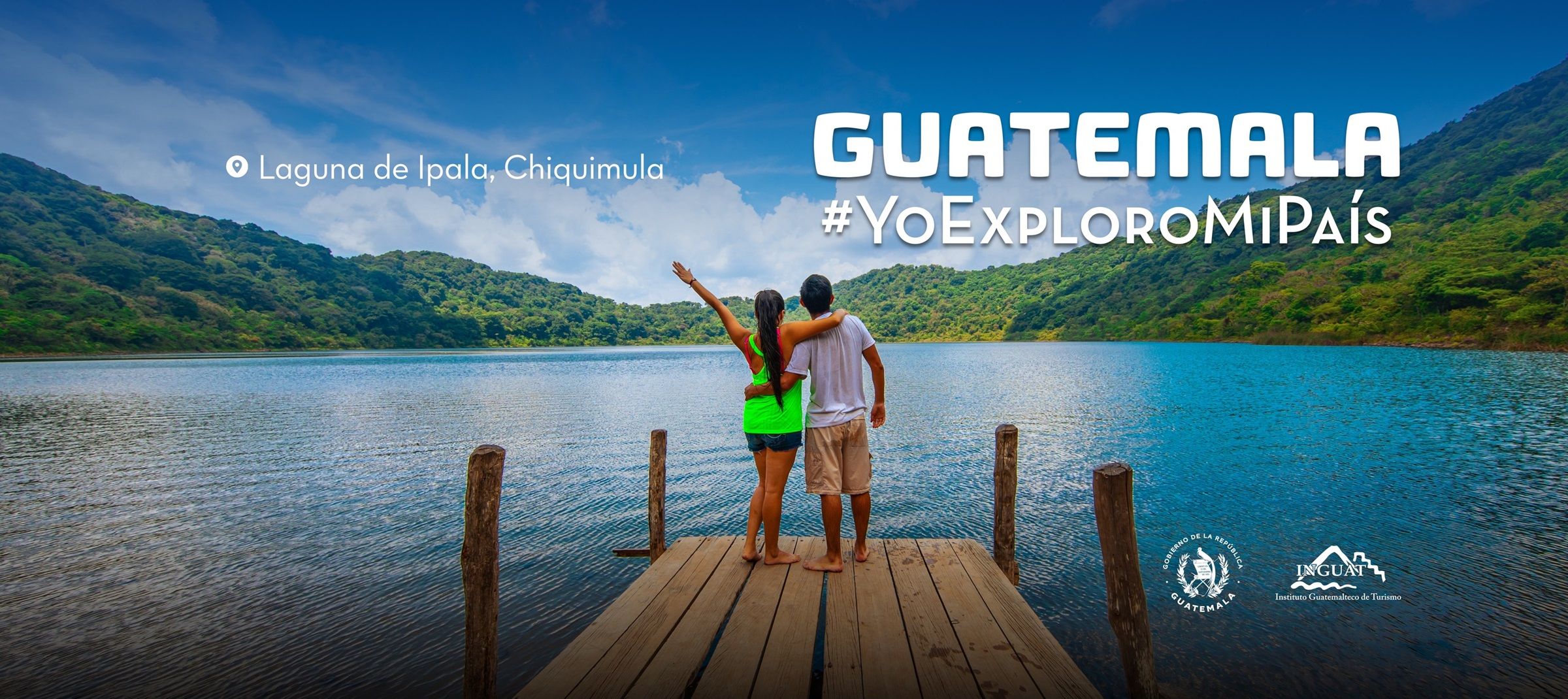
Servicios Turísticos

Visit Guatemala
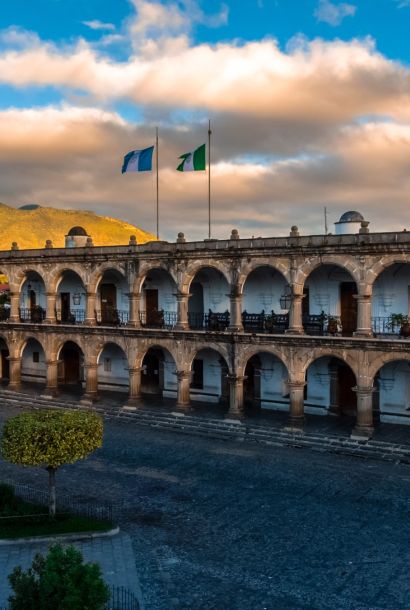
Somos INGUAT
Instituto guatemalteco de turismo, uno de nuestros principales objetivos es impulsar los destinos turísticos de guatemala, para contribuir al desarrollo económico, social y cultural de nuestro país..
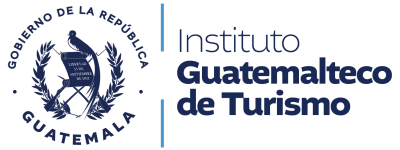
Noticias recientes

Realiza tus pagos desde Bibanking
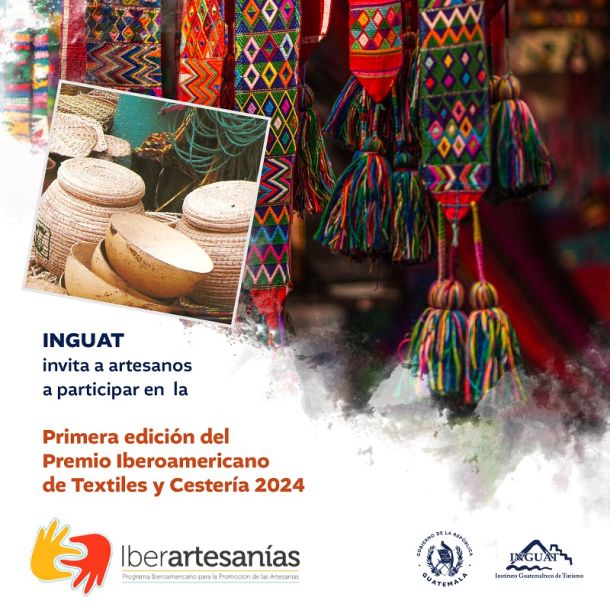
Convocatoria a la Primera edición del Premio Iberoamericano de Textiles y Cestería 2024
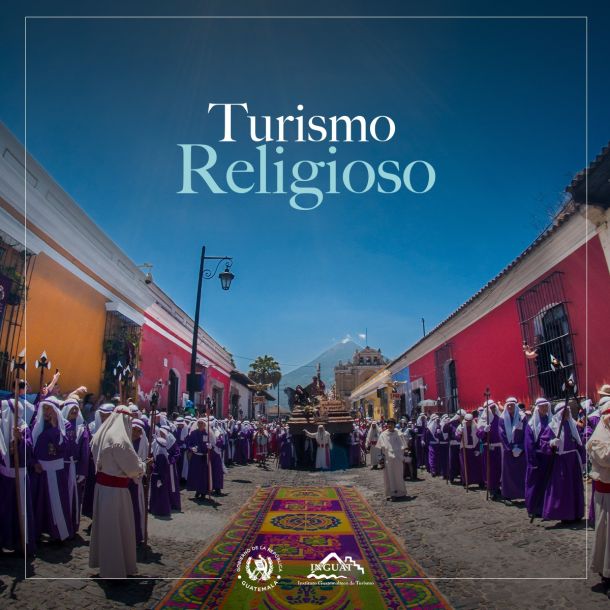
Guatemala expande su oferta turística como destino del Turismo Religioso y se incorpora a la Red Mundial de Destinos de Turismo Religioso
Servicios al turista.
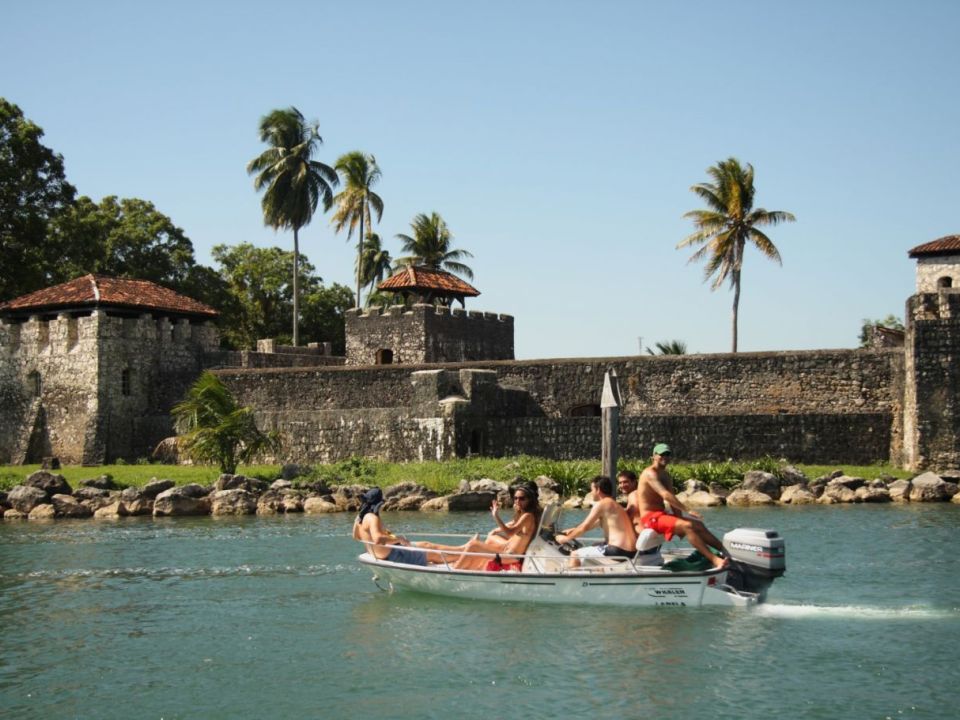
Oficinas de información turística
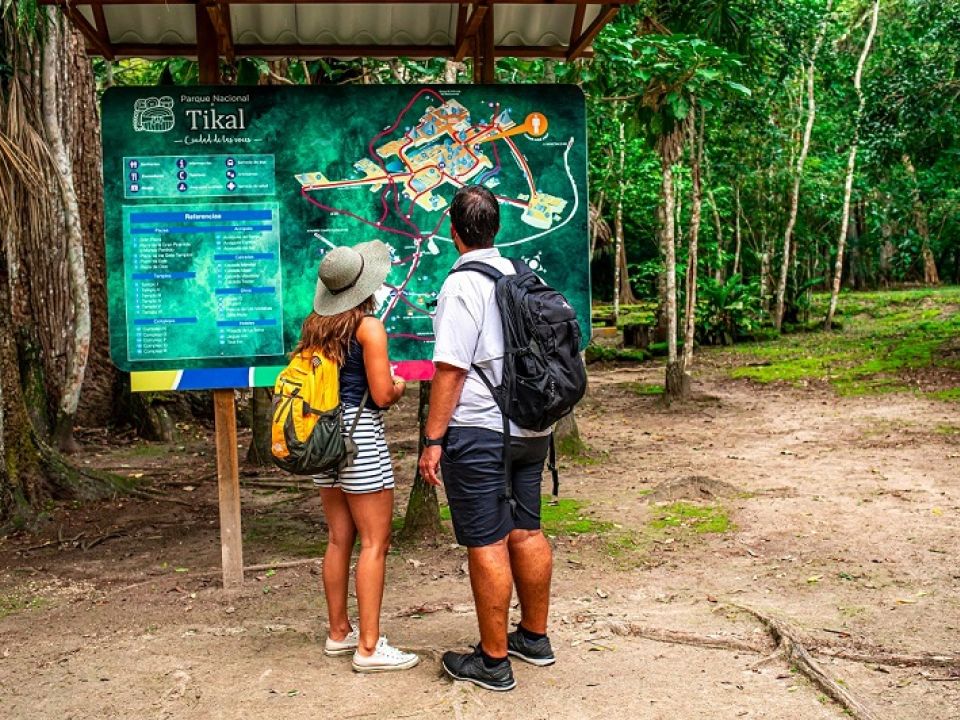
Mapa Interactivo del Mundo Maya
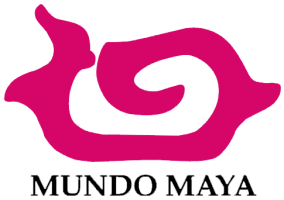
Este mapa interactivo es una colaboración del Instituto Guatemalteco de Turismo -INGUAT- en coordinación con la Organización Mundo Maya y los países miembros, con el objetivo de resaltar los sitios arqueológicos y reservas naturales en donde se asentó la Civilización Maya. La Región Maya abarca actualmente los países de Guatemala, Belice, el occidente de El Salvador y Honduras, y los estados mexicanos de Chiapas, Tabasco, Campeche, Yucatán y Quintana Roo. Como cualquier región cultural, este territorio no puede definirse mediante fronteras, por lo que sus límites han variado con el tiempo y representan zonas de alta interacción con grupos vecinos. De toda la diversidad cultural que ha existido en la historia de la humanidad, los mayas destacan como una de las culturas más impresionantes. Esta calificación no se basa solamente en sus extraordinarios logros en la antigüedad, sino también por su admirable continuidad a través del tiempo, que les ha permitido conservar costumbres y tradiciones milenarias. Antes de la conquista española, la Civilización Maya se destacó en Mesoamérica y en todo el continente americano por logros únicos, entre los que se puede mencionar el desarrollo de un sistema de escritura logo-silábico, un sistema numérico vigesimal que incluyó el concepto del cero, la sincronización de más de cinco sistemas calendáricos y el desarrollo de ciudades complejas dentro de entornos selváticos poco propicios para sostener miles de habitantes. Además, las expresiones arquitectónicas, escultóricas, pictóricas y artesanales de los antiguos pueblos Mayas rivalizan con las que se han documentado en otras regiones del mundo.
Apoyo a prestadores de servicios turísticos
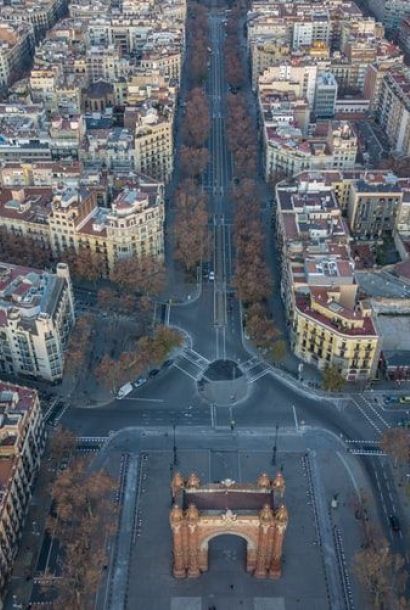
Ferias internacionales
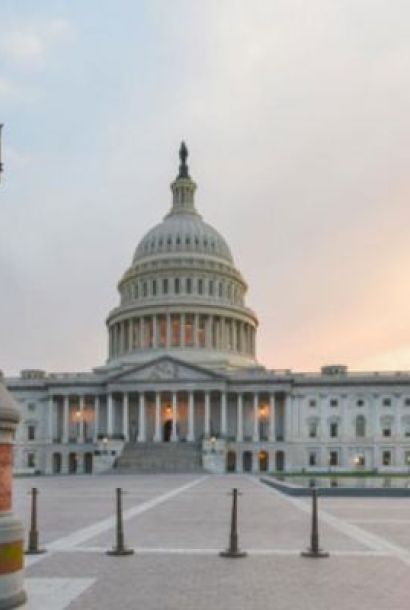
Ferias internacionales planificadas
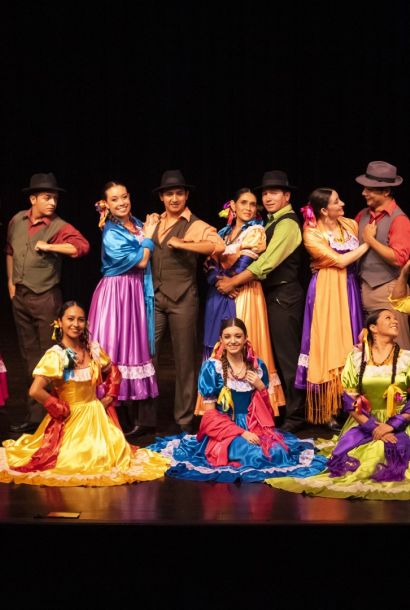
Distintivos de calidad y sostenibilidad turística
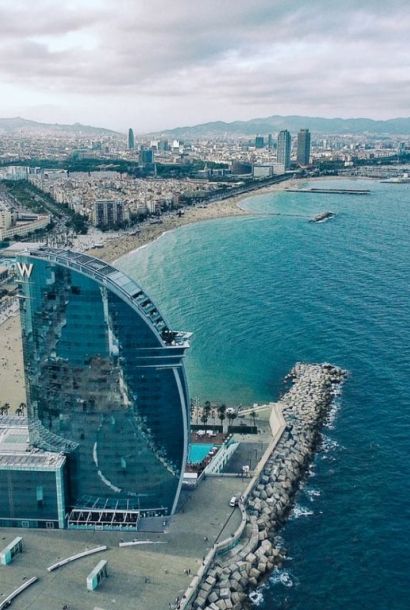
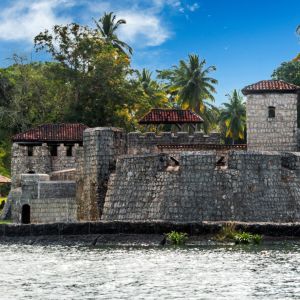
Estadísticas de Turismo
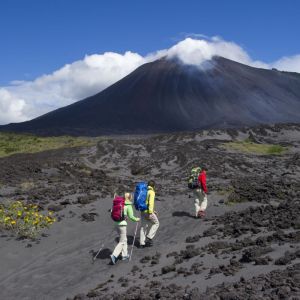
- Travel Tips Guatemala for planning and on the go
Book your individual trip , stress-free with local travel experts
- roughguides.com
- Central America & the Caribbean
- travel-advice
- Travel guide
- Itineraries
- Local Experts
- Travel Advice
- Accommodation
Plan your tailor-made trip with a local expert
Book securely with money-back guarantee
Travel stress-free with local assistance and 24/7 support
Robert, Canada
We had an outstanding trip to Guatemala.
More travel information for Guatemala
From travel safety to visa requirements, discover the best tips for traveling to Guatemala
- Eating and drinking in Guatemala
- How to get to Guatemala
- Getting around Guatemala: Transportation Tips
- Best time to visit Guatemala
- 5 days in Guatemala — 4 travel itineraries
Much of the country maintains a warm climate year round, though it is largely determined by altitude, and there are regional variations (see Volcanoes). The rainy season runs roughly from May to October, with the worst of the rain falling in September and October.
Crime and personal safety
Electricity, entry requirements, guatemalan embassies and consulates, gay and lesbian travellers, opening hours and public holidays, photography, tourist information, useful websites, travellers with disabilities, health advice for guatemala, the media in guatemala, culture in guatemala, travelling with children in guatemala, tailor-made travel itineraries for guatemala, created by local experts.

12 days / from 6840 USD
Off the tourist trail and highlights of Guatemala and Belize
Meet school kids in Antigua and traders in Chichicastenango before learning ancient cookery and weaving skills and viewing a Mayan ceremony. This fascinating tour visits archaeological sites such as majestic Tikal before an idyllic private island stay off Belize’s Caribbean coast completes the trip.

12 days / from 2820 USD
The Best Of Guatemala & Belize
Visit Antigua with the nearby Pacaya volcano before heading to Lake Atitlán and further to Tikal, once one of the most powerful kingdoms of the ancient Maya. Afterwards, cross the border to Belize to visit the Caracol ruins and enjoying some sun & sand on Ambergris Caye.

12 days / from 2450 USD
Guatemala and Belize Family Adventure
Take a family-friendly adventure through Guatemala and Belize. Discover Lake Atitlan on kayaks, explore the active volcano Pacaya or play hide and seek in the large archaeological complex of Tikal before heading out to Belize for its fantastic underwater world and gorgeous beaches.
Guatemala is one of the cheapest countries in the Americas for travellers, though there are plenty of opportunities for a modest (or serious) splurge if you feel like it. The extremely frugal may be able to get by on around US$140 a week in most parts of the country, or below US$120 in a budget travellers’ hub like San Pedro La Laguna. However, if you’re after a little more comfort (travelling by shuttle bus and staying in rooms with an en-suite bathroom) you can expect to spend around US$200 per head per week, if you’re travelling as a couple, while solo travellers should reckon on perhaps US$260 a week. For US$75 per day you can expect to live quite well. Things are more expensive in regions where the local economy is tourist driven (Antigua in particular). A sales tax (IVA) of twelve percent is usually included in the price you’re quoted in most places, except smart hotels. Similarly, the ten percent Inguat accommodation tax is often excluded in luxury places, but rarely elsewhere.
Personal safety is a serious issue in Guatemala. While the vast majority of the 1.8 million tourists who come every year experience no problems at all, general crime levels are high, and it’s not unknown for criminals to target visitors, including tourist shuttle buses. There is little pattern to these attacks, but some areas can be considered much safer than others. Warnings have been posted in the Guide where incidents have occurred. It’s wise to register with your embassy on arrival, try to keep informed of events, and avoid travelling at night. Officially, you should carry your passport (or a photocopy) at all times.
It’s important to try to minimize the chance of becoming a victim. Petty theft and pickpocketing are likely to be your biggest worry. Theft is most common in Guatemala City’s Zona 1 and its bus stations, but you should also take extra care when visiting markets popular with tourists (like Chichicastenango) and during fiestas. Avoid wearing flashy jewellery and keep your money well hidden. When travelling, there is actually little or no danger to your pack when it’s on top of a bus as it’s the conductor’s responsibility alone to go up on the roof and collect luggage.
Muggings and violent crime are of particular concern in Guatemala City. There’s little danger in the daylight hours but don’t amble around at night; use a taxi. There have also been a few cases of armed robbery in Antigua and on the trails around Lago de Atitlán. The Pacaya and San Pedro volcanoes are now well-guarded and considered safe, though there have been robberies on other volcanoes, including Agua.
Reporting a crime to the police can be a long process, it’s best to contact ASISTUR first to smooth the process. Most insurance companies will only pay up if you can produce a police statement.
Drugs including marijuana and cocaine are readily available in Guatemala. Be aware that drug offences can be dealt with severely and even the possession of some weed could land you in jail. If you do get into a problem with drugs, it may be worth enquiring with the first policeman if there is a “fine” ( multa ) to pay, to save expensive arbitration later. At the first possible opportunity, get in touch with your embassy in Guatemala City and negotiate through them; they will understand the situation better than you.
Guatemala’s police force has a poor reputation. Corruption is rampant and inefficiency the norm, so don’t expect that much help if you experience any trouble. That said, they don’t have a reputation for intimidating tourists. If for any reason you do find yourself in trouble with the law, be as polite as possible. Tourist police forces have been set up in Antigua, Panajachel and Tikal, and English-speaking officers should be available to help you out in these places.
The sheer number of armed security guards on the streets and posted outside restaurants and stores is somewhat alarming at first, but after a few days you get used to their presence, even if it is disconcerting to see an 18-year-old with a gun outside McDonald’s .
Power (110–120 volts) and plug connections (two flat prongs) are the same as North America. Anything from Britain or Europe will need a transformer and a plug adapter. Cuts in the supply and fluctuations in the current are fairly common.
Citizens from most Western countries (including the US, UK, Canada, Australia, New Zealand, South Africa and most, but not all, EU states) need only a valid passport to enter Guatemala for up to ninety days. Passport holders from other countries (including some Eastern European nations) qualify for a Guatemalan visa, but have to get one from a Guatemalan embassy or consulate. Citizens from most developing world nations, including much of Asia and Africa, need to apply for a visa well in advance. If you’re wondering whether you’ll need a visa, phone an embassy for the latest entry requirements; Guatemala has embassies in all the region’s capitals.
Although there’s no charge to enter or leave the country, border officials at land crossings commonly ask for a small fee (typically US$2.50), which is destined straight for their back pockets. You might try avoiding such payments by asking for un recibo (a receipt); but prepare yourself for a delay at the border.
It’s possible to extend your visit for a further ninety days, up to a maximum of 180 days. To do this, go to the immigration office ( migración ) in Guatemala City at 6 Av 3–11, Zona 4 ( t 2411 2411; Mon–Fri 8am–4pm). You’ll need to present your passport, photocopies of each page of your passport (there’s a machine in the office), a photocopy of a valid credit card (front and back), and pay the extension fee (US$15); your extension is usually issued the following day. After 180 days you have to leave Guatemala for 72 hours.
In 2006 a so-called CA–4 Central American visa system was set up to facilitate visa-free travel in the four countries of Guatemala, Honduras, El Salvador and Nicaragua. When you entered the region you were issued with a ninety-day visa. However, at the time of research CA-4 appeared to be dead. But to be sure, if your Guatemala visa is coming to an end, extend it by travelling to either Mexico or Belize, which are outside the CA-4, or get an extension in Guatemala City.
For a full list of Guatemalan embassies consult w minex.gob.gt (Spanish only), and click on “directorios”, and the link to embajadas.
Contact Tokyo.
8 A St, King’s Park, Belize City t 223 3150, e [email protected].
130 Albert St, Suite 1010, Ottawa ON K1P 5G4 t 613 233 7188, e embaguate-canada.com.
Joachim-Karnatz-Allee 47, Ecke Paulstrasse, 10557 Berlin t 030 206 4363, w botschaft-guatemala.de .
Colonia Lomas del Guijaro, c/Londres, Bloque B, casa 0440 Tegucigalpa t 2232 5018, e [email protected]. Consulate: 23 Av & 11 Ca, S.O., Colonia Trejo, San Pedro Sula, t 2556 9550.
38 Kowa Building, 9th floor, Room 905, 4-12-24, Nishi-Azabu, Tokyo 106–0031 t 380 01830, e [email protected].
Embassy: Av Explanada 1025, Lomas de Chapultepec 11000, Mexico D.F. t 55 5540 7520, e [email protected]; Consulates: 1 C Sur Poniente 26, Comitán, Chiapas t 963 100 6816; 5 Av Norte 5, Tapachula, Chiapas t 962 626 1252.
Netherlands
Java Straat 44, 2585 AP The Hague t 302 0253, e [email protected].
New Zealand
13 Fawcett St, London SW10 9HN t 020 7351 3042, e [email protected].
2220 R St NW, Washington, DC 20008 t 202 745 4952, e [email protected]. Consulates located in many cities, including Chicago, Houston, LA, Miami, New York, San Diego and San Francisco.
Homosexuality is legal for consenting adults aged 18 or over. However, though Guatemalan society is not as overtly macho as many Latin American countries, it’s wise to be discreet and avoid too much affection in public. There’s a small, almost entirely male scene in Guatemala City.
A comprehensive travel insurance policy is essential for visitors to Guatemala. Medical insurance (you want coverage of US$2,000,000) should include provision for repatriation by air ambulance, and your policy should also cover you for illness or injury, and against theft.
Contact a specialist travel insurance company, or consider the travel insurance deal we offer. A typical travel insurance policy usually provides cover for the loss of baggage, tickets and – up to a certain limit – cash or cheques, as well as cancellation or curtailment of your journey. Many of them exclude so-called dangerous sports (this can mean scuba diving, whitewater rafting, windsurfing and kayaking) unless an extra premium is paid. Try to ascertain if your medical coverage will be paid as treatment proceeds or only after return home, and whether there is a 24-hour medical emergency number.
When securing baggage cover , make sure that the per-article limit – typically under US$750/£500 – will cover your most valuable possession. If you need to make a claim, you should keep receipts for medicines and medical treatment, and in the event you have anything stolen, you must obtain an official statement ( una afirmación ) from the police.
Web services are very well established in Guatemala. Wi-fi is very common in all the main tourist centres, where most hotels, hostels and cafés provide access. You’ll find cybercafés everywhere too, even in small towns and villages. Connection speeds are generally fairly swift in the main urban centres but can be painfully pedestrian in more remote areas. Rates vary, starting at US$0.80 per hour.
For unlimited Wi-Fi on the go whilst travelling Guatemala, buy a Skyroam Solis , which works in 130+ countries at one flat daily rate, paid for on a pay-as-you-go basis. You can connect up to five devices at once. Prices start from as little as €5 a day.
Almost every town has at least one laundry; most will wash and dry a load for you for about US$3–4. Self-service laundries are rare. Many hotels and pensiones also offer laundry facilities; the budget places often have a pila (sink) where you can wash your own clothes.
Postal services are quite reliable, though many locals use courier companies to send important packages and documents overseas. The best way to ensure speedy delivery is to use the main post office ( correos ) in a provincial capital. Generally, an airmail letter to the US takes about a week, to Europe from ten days to two weeks. Receiving mail is not generally a worry as long as you have a reliable address – many language schools and tour operators will hold mail for you. The Poste Restante ( Lista de Correos ) system is no longer operational.
Bear in mind it’s very expensive to send anything heavy home. You may want to use a specialized shipping agency instead: see the Antigua and Panajachel “Directory” for recommended companies.
Courier companies (DHL, Federal Express, etc) are establishing more and more offices throughout the region; even small towns now have them.
Rough Guide’s Guatemala and Belize map (at a scale of 1:500,000), also covers a sizeable part of western Honduras and most of northern El Salvador. International Travel Maps and Books (ITMB) also publishes a reasonable Guatemala map (1:470,000). Both are printed on waterproof, tear-resistant paper.
Locally produced alternatives include an offering by Inguat (US$2) using a scale of 1:1,000,000. Virtually all car rental outlets will provide you with a free map, though most are pretty ropey.
The Instituto Geográfico Militar produces the only large-scale maps of the country. At a scale of 1:50,000, these maps are accurately contoured, although many other aspects are now very out of date. You can consult and purchase them at the institute’s offices, Av de las Américas 5–76, Zona 13, Guatemala City (Mon–Fri 9am–5pm; t 2332 2611, w ign.gob.gt). Most can be bought for around US$6.
Guatemala’s currency, the quetzal (Q), has been very stable for over a decade. But because fluctuations can and do take place, we have quoted all prices in US dollars. (At press time, the rate was Q7.80 to US$1, Q12.3 to £1 and Q10.41 to €1.) The US dollar is by far the most widely accepted foreign currency in Guatemala; that said, it is not a semi-official one, and you can’t get by with a fistful of greenbacks and no quetzals. Euros and other foreign currencies are tricky to cash; try foreign-owned hotels or stores.
Debit and credit cards are very useful for withdrawing currency from bank ATMs but are not widely accepted elsewhere, so don’t count on paying with them except in upmarket hotels and restaurants (let your bank know in advance that you’ll be using it abroad). Beware expensive surcharges (ten percent is sometimes added) if you do want to pay by a card in many stores.
Cashpoints (ATMs) are very widespread, even in small towns. Charges of US$2–3 per withdrawal are widespread, but those using the 5B network, including Banrural, did not charge at the time of research. It’s important to note that most Central American ATMs do not accept five-digit PIN numbers; contact your bank at home in advance if you have one. You’ll probably never have to use them, but it’s wise to have a back-up of a few travellers’ cheques (American Express is by far the most widely accepted brand, and in US dollars) or US dollar bills in case the ATM network fails or your card gets gobbled by a machine.
Note that all currency exchange counters at Guatemala City airport were offering appalling rates (see Museo Miraflores). At the main land-border crossings there are usually banks and a swarm of moneychangers who generally give fair rates for cash.
Guatemalan opening hours are subject to considerable variation, but in general most offices, shops, post offices and museums are open between 8/9am and 5/6pm, though some take an hour or so break for lunch. Banking hours are extremely convenient, with many staying open until 7pm from Monday to Friday, but closing at 1pm on Saturdays.
Archeological sites are open every day, usually from 8am to 5pm, though Tikal is open longer hours. Principal public holidays, when almost all businesses close down, are listed below, but each village or town will also have its own fiestas or saints’ days when many places will be shut.
There are no area codes in Guatemala. To call a number from abroad simply dial the international access code, followed by the country code ( t
502) and the number (all are eight digit).
The cheapest way to make an international phone call is usually from an internet café. Prices start at around US$0.15 per minute to the US or US$0.25 to Europe via web-phone facilities. Local calls are cheap, and can be made from either a communications office or a phone booth (buy a Ladatel phonecard).
Mobile (cell) phones
Many North American and European mobile phones, if unlocked, will work in Guatemala. To avoid roaming charges all you’ll need is a local SIM card (Tigo and Claro are the most popular networks and have excellent coverage). Phones can also be bought locally from as little as US$20 (including around US$15 of calling credit). Keep an eye out for the “ doble ” and “ triple ” offer days, when you can get two to three times the top-up credit you pay for.
In indigenous areas and the countryside you should avoid taking pictures of children unless you get permission from their parents. Sadly children are stolen from their families every year in Guatemala, and rumours persist that Westerners steal babies for adoption. There’s less of an issue in urban areas, where the population is better educated, but even here be sensitive.
Otherwise Guatemala is an exceptionally rewarding destination for photographers with outstanding scenic and human interest. It’s polite to ask before taking portraits, but if you’re in a marketplace using a zoom it’s easy to get shots of people without being too intrusive.
Memory cards for digital cameras are quite widely available; print film and video tapes are getting rarer, but can be bought in most towns. Many internet cafés have card readers and will be able to burn your pictures to a CD for around US$2.
Guatemala is on the equivalent of Central Standard Time in North America, six hours behind GMT. Daylight saving is not used. There is little seasonal change – it gets light around 6am, with sunset at around 5.30pm in December, or 6.30pm in June.
Information about Guatemala is easy to come by inside the country, but less available in Europe or North America. In the US, you can call Inguat , Guatemala’s tourist information authority, on the toll-free number t 1 888 464 8281, while Guatemalan embassy staff in Europe and Canada can often help out too. The material produced by Inguat is colourful, though much of it is of limited practical use. Often specialist travel agents are excellent sources of information.
Staff at Inguat, at 7 Av 1–17, Zona 4, Guatemala City ( t 2421 2800, w visitguatemala.com ), are always helpful and English-speakers are available. The organization has smaller branches in Antigua, Flores, Panajachel and Quetzaltenango, and at the airports in Flores and Guatemala City. All branches should have hotel listings and dozens of brochures and leaflets. Generally the main office and the Antigua outpost are the most reliable. Inguat also helps maintain a telephone assistance line for tourists in Guatemala, t 1500.
If you’re in the UK, the Guatemalan Maya Centre, 94A Wandsworth Bridge Rd, London SW6 2TF ( t 020 7371 5291, w maya.org.uk ), is one of the finest Guatemalan resource centres in the world. It’s open by appointment only, and well worth a visit, with over 2500 books on Guatemala, videos, periodicals and an incredible textile collection.
w aroundantigua.com
Dedicated to Guatemala’s former colonial capital, with cultural events and listings.
w atitlan.com
Concentrates on the Atitlán region, with interesting features plus some hotel and restaurant listings.
w copanhonduras.org
Informative site dedicated to the Copán region in Honduras.
w famsi.org
Academic reports from Mayanists, maps, and articles about flora and fauna.
Website of the Foundation for Human Rights in Guatemala, offering comprehensive coverage of the current human rights situation, plus news reports.
w ghrc-usa.org
Website of the Washington-based Guatemala Human Rights Commission/USA, which publishes regular reports plus urgent action notices.
w guatemala365.com
Good place to begin a search for a Spanish school, with a list of professional schools and plenty of tips.
w guatemalaweb.com
Everything from ATM locations to Maya ceremonies, though some of the practical information is out of date.
w guatemala-times.com
News, features and comment about Guatemala in English.
w lanic.utexas.edu
The Guatemala page on the Latin American Network Information Center’s website is a fine place to begin a search; here you’ll find a comprehensive set of links to websites for everything from nonprofits and language schools to magazines and museums, as well as various academic and tourism resources.
w maya.org.uk
London-based Guatemalan Maya Centre’s site has good articles and links.
w mayadiscovery.com
Strong on art and history of the ancient Maya, plus some wide-ranging cultural essays.
w mesoweb.com
All the latest reports about the ancient Maya.
w mimundo-photoessays.org
Superb photojournalism from an independent reporter.
w mostlymaya.com
Useful practical travel information based on first-hand experience and good cultural content.
w revuemag.com
Content from the popular Antigua-based tourism and travel magazine.
w xelapages.com
Concentrates on the Quetzaltenango area, with comprehensive language-school and business listings, plus popular discussion boards.
w xelawho.com
Dedicated to Guatemala’s second city, with good cultural information and practical content.
Guatemalans are extremely helpful and eager to help disabled travellers. Nevertheless, visitors with disabilities are faced with many obstacles. Wheelchair users will have to negotiate their way over cobbled streets, cracked (or nonexistent) pavements and potholed roads in cities, towns and villages. Getting around Guatemala by public transport can be exhausting for anyone, but trying to clamber aboard a packed chicken bus with a wheelchair or walking sticks, even with a friend to help, presents a whole set of other challenges. Plenty of disabled travellers do successfully make their way around the country though. Most of the main sites are connected by tourist shuttle minibuses, which pick you up from your hotel, and have a driver whose job it is to assist passengers with their luggage. Many Guatemalan hotels are low rise (and larger, upmarket places often have lifts and ramps), so it shouldn’t be too difficult to find an accessible room. You’ll only find disabled toilets in the most expensive hotels.
Most visitors enjoy Guatemala without experiencing any health problems. However, it’s always easier to become ill in a country with a different climate, food and germs – still more so in a poor country with lower standards of sanitation than you might be used to.
It’s vital to get the best health advice you can before you set off. Consult the websites mentioned for health precautions and disease prevention advice. Pay a visit to your doctor or a travel clinic as far in advance of travel as possible, and if you’re pregnant or likely to become so, mention this at the outset. Many clinics also sell the latest travel health products, including water filters and medical kits. Finally you’ll definitely need health insurance.
Once you’re there, what you eat and drink is crucial. In addition to the hazards mentioned under “Intestinal troubles” below, contaminated food and water can transmit the hepatitis A virus, which can lay a victim low for several months with exhaustion, fever and diarrhoea, and can even cause liver damage.
Vaccinations, inoculations and malaria precautions
There are no obligatory inoculations for Guatemala (unless you’re arriving from a “high-risk” area of yellow fever – northern South America and equatorial Africa). Nevertheless, there are several you should have anyway. Make sure you’re up to date with tetanus and typhoid vaccinations and consider having hepatitis A and tuberculosis (TB) jabs. Long-term travellers or anyone spending time in rural areas should think about having the combined hepatitis A and B and the rabies vaccines (though for a caveat on that).
Malaria is a danger in some parts of the country (particularly in the rural lowlands). It’s not a problem in the big cities, or anywhere over 1500m – which includes Antigua, Guatemala City, Chichicastenango, Lago de Atitlán, Quetzaltenango and virtually all of the western highlands. However, if you plan to visit any lowland areas, including Petén, Alta Verapaz and the Pacific or Caribbean coasts, you should consider taking a course of tablets.
The recommended prophylactic is chloroquine (inexpensive, available without prescription and safe in pregnancy); you’ll need to begin taking the pills a week before you enter an area where there’s a risk of malaria and continue for four weeks after you return. Malarone is an alternative drug, which you need start only two days before you go, though it’s not suitable for pregnant women or babies.
Whichever anti-malarial you choose, you should still take precautions to avoid getting bitten by insects: always sleep in screened rooms or under nets in lowland areas; burn mosquito coils; cover up arms and legs, especially around dawn and dusk when mosquitoes are most active; and apply insect repellent (with 25–50 percent DEET; but not to children under 2).
Also prevalent in some lowland areas (usually occurring in epidemic outbreaks in urban areas), dengue fever is a viral infection transmitted by mosquitoes, which are active during the day. Fever, aches and joint pain (its old name was “break-bone fever”) are often followed by a rash. Though most people make a full recovery after a few days, children are particularly at risk. There is no vaccine or specific treatment, so you need to pay great attention to avoiding bites.
Intestinal troubles
Despite all the dire warnings given here, a bout of diarrhoea is the medical problem you’re most likely to encounter. Its main cause is simply the change of diet: the food in the region contains a whole new set of bacteria, and perhaps rather more of them than you’re used to. If you’re struck down, take it easy for a day or two, drink lots of bottled water and eat only the blandest of foods – papaya is good for soothing the stomach and is crammed with vitamins. Only if the symptoms last more than four or five days do you need to worry. Finally, if you’re taking oral contraception or any other orally administered drugs, bear in mind that severe diarrhoea can reduce their efficacy.
Cholera is an acute bacterial infection, recognizable by watery diarrhoea and vomiting. However, risk of infection is extremely low in Guatemala (and symptoms are rapidly relieved by prompt medical attention and clean water). If you’re spending any time in rural areas you also run the risk of picking up various parasitic infections: protozoa – amoeba and giardia – and intestinal worms; these are quite common around Lago de Atitlán. These sound hideous, but once detected they’re easily treated with antibiotics. If you suspect you may have an infestation, take a stool sample to a good pathology lab and go to a doctor or pharmacist with the test results.
More serious is amoebic dysentery, which is endemic in many parts of the region. The symptoms are similar to a bad dose of diarrhoea but include bleeding too. On the whole, a course of flagyl (metronidazole) will cure it.
Bites and stings
Taking steps to avoid getting bitten by insects, particularly mosquitoes, is always good practice. Ticks, which you’re likely to pick up if you’re walking or riding in areas with domestic livestock (and sometimes in forests), need careful removal with tweezers. Head or body lice can be picked up from people or bedding, and are best treated with medicated shampoo; very occasionally, they may spread typhus, characterized by fever, muscle aches, headaches and eventually a measles-like rash. If you think you have it, seek treatment from a doctor.
Scorpions are common; mostly nocturnal, they hide during the heat of the day – often in thatched roofs. If you’re camping, or sleeping under a thatched roof, shake your shoes out before putting them on and try not to wander round barefoot. Their sting is painful (rarely fatal) and can become infected, so you should seek medical treatment if the pain seems significantly worse than a bee sting. You’re less likely to be bitten by a spider, but seek medical treatment if the pain persists or increases.
You’re unlikely to see a snake, and most are harmless in any case. Wearing boots and long trousers will go a long way towards preventing a bite – tread heavily and they will usually slither away. If you do get bitten, remember what the snake looked like (kill it if you can), immobilize the bitten limb and seek medical help immediately; antivenins are available in most main hospitals.
Swimming and snorkelling might bring you into contact with potentially dangerous or venomous sea creatures. If you are stung by a jellyfish, clean the wound with vinegar or iodine.
Finally, rabies is present, but rare in Guatemala. The best advice is to give dogs a wide berth and not to play with animals at all. Treat any bite as suspect: wash any wound immediately with soap or detergent and apply alcohol or iodine if possible. Act immediately to get treatment – rabies can be fatal once symptoms appear. There is a vaccine, but it is expensive, serves only to shorten the course of treatment you need anyway and is effective for no more than three months.
Heat and altitude problems
Two other common causes of illness are altitude and the sun. The best advice in both cases is to take it easy; allow yourself time to acclimatize before you race up a volcano, and build up exposure to the sun gradually. If going to altitudes above 2700m, you may develop symptoms of Acute Mountain Sickness (AMS), such as breathlessness, headaches, dizziness, nausea and appetite loss. More extreme cases might cause vomiting, disorientation, loss of balance and coughing up of pink frothy phlegm. The simple cure – a slow descent – almost always brings immediate recovery.
Tolerance to the sun, too, takes a while to build up. Use a strong sunscreen and, if you’re walking during the day, wear a hat and try to keep in the shade. Avoid dehydration by drinking plenty of water or fruit juice. The most serious result of overheating is heatstroke, which can be potentially fatal. Lowering the body temperature (by taking a tepid shower, for example) is the first step in treatment.
Getting medical help
For minor medical problems, head for a farmacia – look for the green cross – there’s one in every town and most villages. Pharmacists are knowledgeable and helpful, and many speak some English. They can also sell drugs over the counter that are only available on prescription at home. Every capital city has doctors and dentists, many trained in the US, who speak good English. Your embassy will always have a list of recommended doctors.
Health insurance is essential and for anything serious you should go to the best private hospital you can reach. If you suspect something is amiss with your insides, it might be worth heading straight for the local pathology lab before seeing a doctor. Many rural communities have a health centre (centro de salud or puesto de salud), where health care is free, although there may only be a nurse or health worker available and you can’t rely on finding anyone who speaks English. Should you need an injection or transfusion, make sure that the equipment is sterile (it might be worth bringing a sterile kit from home) and ensure any blood you receive is screened.
There are some decent English-language publications available in Guatemala, mainly geared towards the tourist market. It’s easy to keep up to date with current affairs online by using internet cafés or wi-fi.
Newspapers and magazines
Guatemala has a number of daily newspapers. The best of the dailies is the forthright El Periódico ( elperiodico.com.gt ), which has some excellent columnists and investigative journalism. Siglo 21 (w s21.com.gt) is also a good read. Guatemala’s most popular paper is the Prensa Libre (w prensalibre.com), which features comprehensive national and quite reasonable international coverage. In the Quetzaltenango area, check out the local paper Quetzalteco (w elquetzalteco.com.gt). As for the periodicals, La Crónica (w lacronica.com) concentrates on current Guatemalan political affairs and business news with a smattering of foreign coverage.
In theory, the nation’s newspapers are not subject to restrictions, though pressures and threats are still exerted by criminal gangs and those in authority. Being a campaigning journalist in Guatemala is a dangerous profession, and every year there are several contract killings.
There are several free English-language publications, which can be picked up in hotels and restaurants where tourists congregate. Revue (w revuemag.com) is a glossy colour magazine with articles about Guatemalan culture and history plus hundreds of advertisements. Based in Antigua, La Cuadra (w lacuadraonline.com) adopts an irreverent, satirical tone and has discursive features about everything from politics to art. In the Quetzaltenango area, Xela Who? (w xelawho.com) concentrates on cultural life in the second city, with bar and restaurant reviews and culture and transport information. For coverage of development issues and Guatemalan society pick up a copy of Entremundos (w entremundos.org), which is widely available in Quetzaltenango.
For really in-depth reporting and analysis, the Central America Report (w www.latinnews.com) is superb, with coverage of all the main political issues, and investigations. Head to the website w guatemala-times.com for news about Guatemala in English.
As for foreign publications, Newsweek, Time and some US newspapers are available in quality bookstores around the country.
Radio and television
Guatemala has an abundance of radio stations, though variety is not their strong point. Most transmit a turgid stream of Latin pop and cheesy merengue, which you’re sure to hear plenty of on the buses. Try Atmosfera (96.5FM) for rock, Radio Infinita (100.1FM) which is eclectic by nature and strong on indie and electronica, or La Marca on (94.1FM) for reggaeton. Radio Punto (90.5FM) has news and discussions.
Television stations are also in plentiful supply. Most of them broadcast Mexican and US shows (which are subtitled or dubbed into Spanish). Many hotel rooms have cable TV, which often includes (English-language) CNN and sometimes the National Geographic channel.
Sadly the BBC World Service is no longer broadcast in Central America. For Voice of America frequencies consult w voa.gov.
Guatemalans have a deserved reputation as some of the most civil, polite people in Latin America. They’re nowhere near as upfront as many Ladinos and quite formal in social situations. Mastering an understanding of local social etiquette will greatly enhance your trip.
Whether you’re clambering aboard a packed public minibus in the country or attending a high-society dinner party in the capital, it’s normal to introduce yourself with a polite greeting of “buenos días/buenas tardes” (good morning/afternoon or evening). Up in the highlands, if you’re walking a trail or passing through a small village, it’s usual to say hello to everyone you meet. It’s actually very common for locals, even senior officials, to say “a sus órdenes” (literally “at your orders”) as they help you out. If you’re introduced to someone, a gentle handshake and a “con mucho gusto” (“pleased to meet you”) is appropriate.
There’s no special dress code for women to consider when visiting Guatemala, though you might want to avoid seriously short skirts or tight tops to avert potential hassle. Generally in indigenous areas, most local women wear a calf-length skirt, but it’s fine for foreigners to wear trousers or knee-length short pants. By the coast or around a hotel pool, sunbathing in a swimsuit is perfectly acceptable, though it’s best to keep your bikini top on.
Guatemalan men very rarely wear shorts, except on the beach, but foreigners can do as they please without offence – except perhaps to a formal engagement.
You should bear in mind that while most Maya are proud that foreigners find their textiles attractive, clothing has a profound significance, related to their identity and history – it’s not wise for women travellers to wear men’s shirts or trousers, or for men to wear huipiles. Whether you’re male or female it’s best to dress fairly conservatively when entering a church; knee-length shorts and T-shirts are suitable.
Women travellers
Guatemala is, on the whole, a safe country for female travellers, and it’s an extremely popular destination for thousands of solo travellers, most of whom have an amazing experience. It’s best to dress fairly modestly and avoid getting yourself into situations where trouble might arise. In towns, particularly the capital, take a taxi home after dark. Trust your instincts. Most Guatemalan men do not adopt especially macho mannerisms, indeed most are softly spoken and quite deferential to foreign women. That said, if you do encounter hassle it’s best to remain firm, assertive and disinterested. As most local men are short in stature, it’s possible to adopt an authoritative stance if you’re tall. Some hustlers do hang around dance clubs and bars looking to pick up gringas, but most of these guys have a wife and kids at home.
Guatemala is the least Catholic Latin American country. It’s estimated that approaching forty percent of the population now belong to one of several dozen US-based Protestant churches – for more about this evangelical movement, see Contexts. Many of Guatemala’s Catholics also continue to practice ancient Maya religious customs in the indigenous villages of the highlands. There has been a resurgence of interest in Maya spiritualism among young, educated Guatemalans since the end of the civil war, and attending “shamanic colleges” has become fashionable. Guatemala City also has tiny Jewish and Muslim communities.
In smart restaurants a ten percent tip is appropriate, but in most places, especially the cheaper ones, tipping is the exception rather than the rule. Taxi drivers are not normally tipped.
The most common names are baños or servicios, and the signs are damas (women) and caballeros (men). Toilets are nearly always Western-style (the squat bog is very rare), with a bucket for your used paper. Standards vary greatly. Public toilets are rare; some are quite well looked after by an attendant who charges a fee to enter and sells toilet paper, others are filthy.
It can be exceptionally rewarding to travel with children in Guatemala. Most locals, particularly in indigenous areas, have large families so your kids will always have some company. By bringing your children along to Guatemala, you’ll take a big step toward dismantling the culture barrier and families can expect an extra warm welcome. Hotels, well used to putting up big Guatemalan families, are usually extremely accommodating.
Obviously, you’ll have to take a few extra precautions with your children’s health, paying particular care to hygiene and religiously applying sunscreen. Dealing with the sticky tropical heat of Petén is likely to be one of the biggest difficulties, but elsewhere humidity is much less of a problem. As young children are rarely enthralled by either modern highland or ancient Maya culture, you may want to plan some excursions: the giant Xocomíl water park and Parque Xetulul theme park and Auto Safari Chapín make great days out for kids. The Museo de los Niños and Aurora zoo in Guatemala City are a lot of fun too. Take extra care if you head for the Pacific beaches, as every year several children (and adults) drown in the strong undertow.
For babies, you’ll find baby milk and disposable nappies (diapers) are widely available in supermarkets and pharmacies; take an extra stock if you’re visiting really remote areas. Every town in the country has at least a couple of pharmacies, and medication for children is available. Breast-feeding in public is fine.
The Rough Guides to Guatemala and related travel guides
In-depth, easy-to-use travel guides filled with expert advice.

Travel advice for Guatemala
Find even more inspiration here.
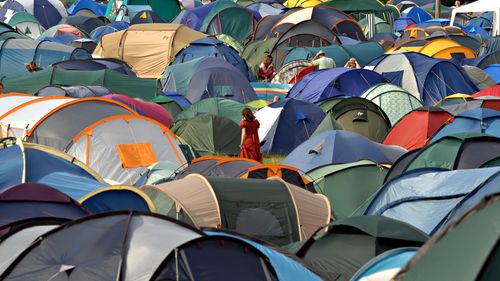
Ready to travel and discover Guatemala?
Get support from our local experts for stress-free planning & worry-free travels.
- Where to stay
- Travel advice
Cookies on GOV.UK
We use some essential cookies to make this website work.
We’d like to set additional cookies to understand how you use GOV.UK, remember your settings and improve government services.
We also use cookies set by other sites to help us deliver content from their services.
You have accepted additional cookies. You can change your cookie settings at any time.
You have rejected additional cookies. You can change your cookie settings at any time.
- Passports, travel and living abroad
- Travel abroad
- Foreign travel advice
Safety and security
This guide also has safety advice for regions of Guatemala .
There is a high threat of terrorist attack globally affecting UK interests and British nationals, including from groups and individuals who view the UK and British nationals as targets. Stay aware of your surroundings at all times.
UK Counter Terrorism Policing has information and advice on staying safe abroad and what to do in the event of a terrorist attack. Find out how to reduce your risk from terrorism while abroad .
Terrorism in Guatemala
Although there’s no recent history of terrorism in Guatemala, attacks cannot be ruled out.
Political situation
Following nationwide elections in Guatemala in August 2023, the Guatemalan Public Ministry contested the electoral process. This resulted in a number of protests and roadblocks across the country. Whilst a majority of the roadblocks have been lifted, some remain and the risk of others being created is likely.
See a list of protests and roadblocks (‘bloqueados’) (in Spanish).
Events are fast moving, and the situation has potential to deteriorate without warning.
Most of the protests have been peaceful, but there have clashes between protestors and police, with the use of tear gas.
Avoid all protests and roadblocks and check with local authorities as well as media outlets for the latest information. It is illegal for foreigners to participate in political activities in Guatemala. If you take part in protests, you may be detained and asked to leave the country.
Incidents of political violence, strikes and large demonstrations can occur, often with little or no notice. Most demonstrations are peaceful, but they can turn violent. Protestors may block roads and public facilities, including the international airport, without notice.
Guatemala has one of the highest violent crime rates in Latin America. Although most of the serious crime involves local gangs, incidents are usually indiscriminate and can take place in tourist areas.
No parts of Guatemala City are free from crime, including Zone 10 (Zona Viva), which is popular with tourists and foreign residents. Take care in Zone 1 (the historical centre), where cheaper hotels are located and several bus routes end.
There have been armed attacks on tourists travelling by road to and from major tourist sites like Antigua, Tikal, Petén and Lake Atitlán. See Regional risks .
Violent crime
Carjacking and armed robbery are common on the main road (Carretera Salvador) leading from Guatemala City to the border with El Salvador. Express kidnappings are common in Guatemala. Victims of this type of kidnapping are usually taken to ATMs to withdraw as much cash as possible before they’re released. The use of guns or knives is not uncommon.
Violent attacks, including sexual assault, can take place anywhere and at any time of the day. They usually involve firearms and motorbike riders. Attackers have killed and injured victims who resisted. There is a low arrest and conviction rate.
Protecting yourself and your belongings
You can take precautions such as:
- not displaying valuables like laptops, cameras and mobile phones
- not wearing a lot of jewellery
- carrying only small amounts of cash – avoid withdrawing a lot of money, particularly at night
- keeping valuables safe (for example, in a hotel safe)
- not travelling alone or at night, especially near borders or in areas without many people
If you go to remote areas, it may be safer to travel with others or a reputable tour company.
For shorter trips within towns and cities the safest option is to take radio-dispatched taxis (which are usually yellow) or hotel taxis. You can buy pre-paid taxi vouchers from the office of INGUAT , Guatemala’s tourist agency (in Spanish) in the airport’s arrivals terminal.
If you’re driving, it is generally safer to travel on main roads. There is a greater risk of attack by gangs on quieter routes. Travel in convoy if possible.
Take care around ATMs, petrol station forecourts, the airport, bus stations and shopping centres.
You can get up-to-date security information from INGUAT .
INGUAT ’s tourist assistance and emergency service, PROATUR , will accompany individual tourists or groups travelling in Guatemala if requested (see Getting help ).
Buses and coaches
Avoid travelling on public buses (repainted US school buses). There has been an increase in armed attacks by local gangs on bus drivers and conductors, often resulting in serious injury or death. These attacks have included the use of explosives. There have also been violent muggings, rapes and assaults against foreigners.
Private intercity coach services are generally safer, but gangs have also attacked these during daylight hours, even on main roads.
ATM tampering
Check ATMs for evidence of tampering. Affected machines may not be easy to spot. It’s safer to change money in hotels, at banks or at foreign exchange offices.
Bogus police officers
Criminals posing as police officers have committed theft, extortion and sexual assault against visitors to Guatemala.
Foreign visitors are at risk of scams. Scams come in many forms and can lead to great financial loss. Warn your friends and family to be sceptical if they’re asked to transfer funds to you in Guatemala. Tell them to contact you to check that you’ve made this request.
Laws and cultural differences
Personal id.
It is a legal requirement to always carry ID. In most parts of the country, you can carry a copy of your passport’s photo page for identification purposes. In San Pedro La Laguna, Sololá, local authorities may not accept a copy and may fine or detain you if you cannot show your original passport or a certified copy. Always co-operate with military and police officers and be prepared for checkpoints.
Alcohol laws and bans
It is illegal to sell alcoholic and fermented beverages from 1am to 6am.
Illegal drugs and prison sentences
There are severe penalties for drug trafficking and use. Guatemalan prisons are overcrowded, violent and dirty.
Taking photos without permission
Do not take photographs without permission, especially of children. This is particularly important in more remote areas such as Quiché, Petén, San Marcos and Chiquimula provinces. There have been attacks related to accusations and fears of child kidnapping for adoption or theft of vital organs. Foreigners have been caught up in the violence. You may need to pay a small amount of money to take photographs of both children and adults.
LGBT+ travellers
Homosexuality is not illegal, although there are no laws guaranteeing freedom from discrimination on the grounds of sexual orientation. Same-sex marriages are not recognised in Guatemala. In Guatemala City, local people are largely tolerant of different lifestyles. Outside Guatemala City, attitudes are more conservative. Showing affection in public may bring verbal and physical attacks, harassment and discrimination.
Read more advice for LGBT+ travellers .
Transport risks
Road travel.
If you are planning to drive, see information on driving abroad .
You can use a UK photocard driving licence to drive in Guatemala for up to 3 months. If you still have a paper driving licence, you may need to update it to a photocard licence or get the correct version of the international driving permit ( IDP ) as well.
Hire car companies often have stricter requirements for their customers, such as a year of driving experience, a higher minimum age and holding an IDP .
Driving rules and safety
In Guatemala:
- it is illegal to use a mobile phone while driving
- speed limits are strictly enforced
- motorcyclists must wear an orange vest and helmet with the registration number or face a fine of 1,000 Guatemalan quetzal (around £100)
Drink-driving is a serious offence. If you are tested and found to have any alcohol in your system, you may get a fine, your licence confiscated and possible imprisonment. However, drinking-driving is common in Guatemala.
In more isolated locations, roads are unpaved and you may need a 4-wheel drive vehicle.
If you’re involved in an accident, contact the National Police (telephone: 110) or the fire brigade (telephone: 122 or 123 ) and wait for them to arrive. PROVIAL (telephone: +502 2419 2121 or 1520), a roadside assistance force, patrols most of the major roads in the country. However, patrols are infrequent.
For more information on road laws, see Guatemala Department of Transport (in Spanish).
Intercity buses
Guatemala Municipality no longer allows some intercity buses to enter the city centre. They drop passengers at various points on the city outskirts.
Outdoor activities and adventure tourism
Climbing volcanoes.
Before you climb volcanoes, visit the websites of the Guatemalan Meteorological Office (in Spanish) and CONRED , Guatemala’s disaster agency (in Spanish) for information on access, restrictions and recommendations. Follow the advice of local authorities. Some volcanoes are at high altitude with freezing temperatures at night. Tourists have died of exposure on volcanoes in Guatemala. Warm clothing and waterproofs are essential. Local tour organisers tend to underestimate the risks. There is no mountain rescue service.
Extreme weather and natural disasters
See extreme weather and natural hazards for information about how to prepare, and how to react if there is a warning.
Rainy season
The rainy season in Guatemala normally runs from June to November – the same time as the hurricane season in the Caribbean. Heavy rains cause frequent flooding and landslides, and roads and bridges often collapse.
Check local media and consult your tour operator and PROATUR , Guatemala’s tourist assistance service (see Getting help ). Travel routes are likely to face disruption. Monitor local and international weather updates from the World Meteorological Organization and the US National Hurricane Center . Follow the advice of the local authorities, including any evacuation orders.
Earthquakes
There are frequent minor earth tremors and there is a risk of earthquakes in Guatemala. The US Federal Emergency Management Agency website has advice about what to do before, during and after an earthquake or tsunami .
Volcanic eruptions
There is a risk of volcanic eruptions in Guatemala. Monitor local media and seek advice from your tour operator in case of possible travel disruption. For further information see CONRED , Guatemala’s disaster agency (in Spanish).
Related content
Is this page useful.
- Yes this page is useful
- No this page is not useful
Help us improve GOV.UK
Don’t include personal or financial information like your National Insurance number or credit card details.
To help us improve GOV.UK, we’d like to know more about your visit today. Please fill in this survey .
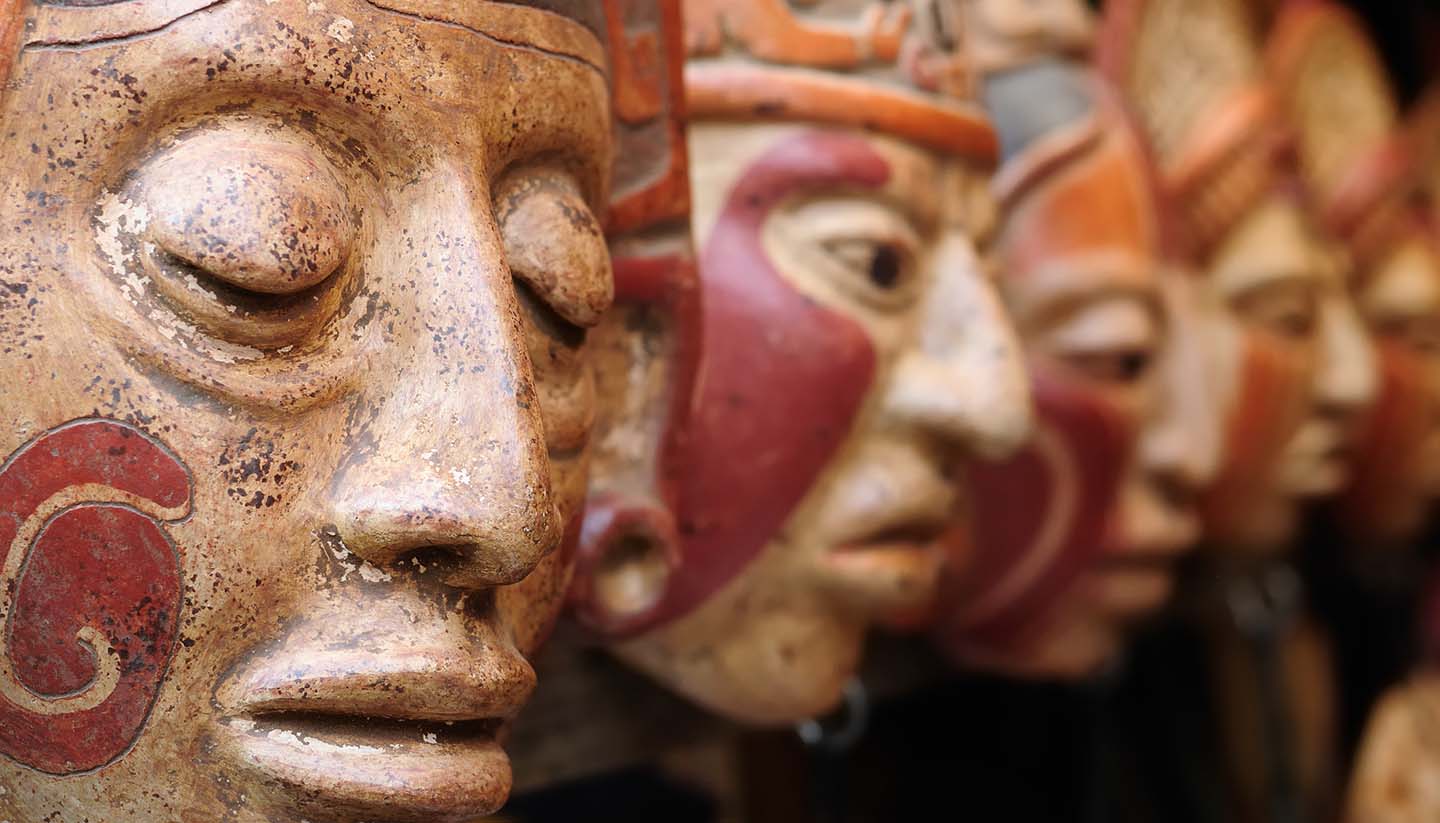
Introducing Guatemala
About guatemala.
- Images of Guatemala
- History, language & culture
- Weather & geography
- Doing business & staying in touch
Plan your trip
- Travel to Guatemala
- Where to stay
While you’re there
- Things to see & do
- Shopping & nightlife
- Food & drink
- Getting around
Before you go
- Passport & visa
- Public Holidays
- Money & duty free
Book your flights
Guatemala travel guide
Guatemala humbly has it all: from colonial towns to Mayan ruins, great mountain lakes to vibrant religious festivals, sandy beaches to exotic jungles. Often visitors to the country find they leave enlightened; civilisations they believed long gone are found thriving, Tomb Raider landscapes they thought fantasy are shown to be real.
Antiquity is at the heart of Guatemala, and the country is home to many spectacular Mayan archaeological sites, most significantly the vast UNESCO World Heritage Site of Tikal, where great towers peep through the rainforest canopy and monkeys swing past the sprawling ancient plazas. The pine-forested hills of the highlands are home to many Mayan communities, whose indigenous beliefs, traditional dress, religious practices and craftsmanship, flourish. Indeed, Guatemala has around 21 different ethnic groups, speaking some 23 languages giving it a distinctive culture like nowhere else in the region.
Although Guatemala boasts some truly stunning cities – most notably Antigua, an upmarket colonial town surrounded by smouldering volcanoes – Guatemala’s real joy is its nature. The great Lake Atitlan in the highlands is a place of rare beauty and offers various adventure activities ranging from scuba diving to fishing.
On the other side of the country, the vast and remote region of Peten houses the country’s thickest jungle, home to long-abandoned Mayan ruins that few get to see. Elsewhere, gargantuan lakes, lava-oozing volcanoes, black sandy beaches, natural hot springs and roaring rivers combine to form the most geographically diverse destination in Central America.
Though consistently beautiful, Guatemala is a nation of contrasts; a place where Catholic churches exist alongside Mayan temples, where rugged highlands give way to tropical jungles, and where the legacy of its ancient civilisations is as evident as its modern, Latin American culture.
Despite stories of high crime rates and volatile politics, most visitors encounter nothing but warmth and hospitality from its people, as well as epic landscapes that make them wonder why they didn’t visit sooner.
108,889 sq km (42,042 sq miles).
16,672,956 (UN estimate 2016).
137 per sq km.
Guatemala City.
Constitutional Democratic Republic.
President Bernardo Arévalo since 2024.
President Alejandro Giammattei since 2020.
Travel Advice
The Foreign, Commonwealth & Development Office ( FCDO ) provides advice about risks of travel to help British nationals make informed decisions. Find out more about FCDO travel advice .
Your travel insurance could be invalidated if you travel against advice from the Foreign, Commonwealth & Development Office (FCDO).
Areas where FCDO advises against all but essential travel
FCDO advises against all but essential travel to:
- within 5km of the Mexican border from the Pacific Coast up to and including the Gracias a Dios crossing
- to the towns of Santa Ana Huista, San Antonio Huista and La Democracia in the department of Huehuetenango
Find out more about why FCDO advises against travel to these areas .
Before you travel
No travel can be guaranteed safe. Read all the advice in this guide and see support for British nationals abroad for information about specific travel topics.
Follow and contact FCDO travel on Twitter , Facebook and Instagram . You can also sign up to get email notifications when this advice is updated.
Travel insurance
If you choose to travel, research your destinations and get appropriate travel insurance . Insurance should cover your itinerary, planned activities and expenses in an emergency.
This advice reflects the UK government’s understanding of current rules for people travelling on a full ‘British citizen’ passport from the UK, for the most common types of travel.
The authorities in Guatemala set and enforce entry rules. If you’re not sure how these requirements apply to you, contact the Guatemalan Embassy in the UK .
COVID-19 rules
There are no COVID-19 testing or vaccination requirements for travellers entering Guatemala.
Travel in Guatemala
You may be asked to wear a mask in:
- medical settings (hospitals, clinics, vaccination centres and laboratories)
- nursing homes
Passport validity requirements
Your passport must have an ‘expiry date’ at least 6 months after the day you arrive in Guatemala and at least 2 blank pages.
Check with your travel provider that your passport and other travel documents meet requirements. Renew your passport if you need to.
You will be denied entry if you do not have a valid travel document or try to use a passport that has been reported lost or stolen.
Visa requirements
You can visit Guatemala for up to 90 days without a visa.
If you overstay the 90 days, you’ll have to pay a fine before leaving the country. You can pay this fine at the main Institute of Migration (in Spanish) office in Guatemala City. You can also pay fines at the airport or land borders, but administrative processes can cause serious delays.
Make sure you get your passport stamped.
If you do not get your passport stamped when you arrive, you will get a fine and be delayed on your departure. If you notice your passport has not been stamped, return to the immigration desk, or go to the Institute of Migration (in Spanish) offices in Guatemala City as soon as possible.
Applying for or extending a visa
To stay longer than 90 days (to work or study, for business travel or for other reasons), you must meet the Guatemalan government’s entry requirements. Check which type of visa or work permit you need with the Guatemalan Embassy in the UK .
If you want to extend your visa or permit to stay, you must apply to the Institute of Migration (in Spanish).
Immigration declaration form
Before you enter or exit Guatemala, you must complete the online immigration declaration form . Print the confirmation email you receive and carry it with you. Alternatively take a screenshot of the email QR code. If you need more information, contact your travel agent or the Institute of Migration (in Spanish).
Travelling with children
To enter or exit Guatemala, children aged 17 and under travelling alone or with only one parent or legal guardian must have a notarised letter in Spanish from the parents or guardians not travelling with them. Contact the Guatemalan Embassy , or if you’re in Guatemala the nearest Institute of Migration (in Spanish), for information about what documents you need. Single parents will need additional documents.
Travelling to El Salvador, Honduras and Nicaragua
Under the Central America Border Control Agreement (also known as CA-4), you can travel between El Salvador, Guatemala, Honduras and Nicaragua for up to 90 days without a visa. The 90-day period starts when you enter any of these countries and does not restart when you cross borders. You can extend your stay by up to 30 days by paying a fee before the 90 days expires. If you overstay, you may get a fine.
You’ll have to go through immigration checks at borders. If you’re expelled from one of these countries, you’re also excluded from the other 3.
If you’re planning to travel to Nicaragua, check entry requirements with your travel company, the Nicaraguan immigration authorities or the nearest Nicaraguan Embassy. See travel advice for Nicaragua .
Airport tax
You must pay airport departure tax of 30 US dollars (or the same amount in Guatemalan quetzal). This is normally included in the price of your ticket.
Illegal entry fees at land borders
Guatemalan customs or immigration officials sometimes ask travellers crossing land borders to pay an ‘entry fee’. This is illegal. If you are asked to pay a fee, ask for an official receipt, and you may find the officials drop the request.
When crossing into Guatemala by the land border at El Carmen, be wary of people offering to help process your entry into the country. They may be trying to overcharge you for unnecessary services.
Vaccination requirements
At least 8 weeks before your trip, check the vaccinations and certificates you need in TravelHealthPro’s Guatemala guide .
Depending on your circumstances, this may include a yellow fever certificate.
Customs rules
There are strict rules about goods you can take into or out of Guatemala. You must declare anything that may be prohibited or subject to tax or duty.
Taking money into Guatemala
It is often not possible to exchange British pounds in Guatemala. It is much easier to exchange US dollars.
This guide also has safety advice for regions of Guatemala .
There is a high threat of terrorist attack globally affecting UK interests and British nationals, including from groups and individuals who view the UK and British nationals as targets. Stay aware of your surroundings at all times.
UK Counter Terrorism Policing has information and advice on staying safe abroad and what to do in the event of a terrorist attack. Find out how to reduce your risk from terrorism while abroad .
Terrorism in Guatemala
Although there’s no recent history of terrorism in Guatemala, attacks cannot be ruled out.
Political situation
Following nationwide elections in Guatemala in August 2023, the Guatemalan Public Ministry contested the electoral process. This resulted in a number of protests and roadblocks across the country. Whilst a majority of the roadblocks have been lifted, some remain and the risk of others being created is likely.
See a list of protests and roadblocks (‘bloqueados’) (in Spanish).
Events are fast moving, and the situation has potential to deteriorate without warning.
Most of the protests have been peaceful, but there have clashes between protestors and police, with the use of tear gas.
Avoid all protests and roadblocks and check with local authorities as well as media outlets for the latest information. It is illegal for foreigners to participate in political activities in Guatemala. If you take part in protests, you may be detained and asked to leave the country.
Incidents of political violence, strikes and large demonstrations can occur, often with little or no notice. Most demonstrations are peaceful, but they can turn violent. Protestors may block roads and public facilities, including the international airport, without notice.
Guatemala has one of the highest violent crime rates in Latin America. Although most of the serious crime involves local gangs, incidents are usually indiscriminate and can take place in tourist areas.
No parts of Guatemala City are free from crime, including Zone 10 (Zona Viva), which is popular with tourists and foreign residents. Take care in Zone 1 (the historical centre), where cheaper hotels are located and several bus routes end.
There have been armed attacks on tourists travelling by road to and from major tourist sites like Antigua, Tikal, Petén and Lake Atitlán. See Regional risks .
Violent crime
Carjacking and armed robbery are common on the main road (Carretera Salvador) leading from Guatemala City to the border with El Salvador. Express kidnappings are common in Guatemala. Victims of this type of kidnapping are usually taken to ATMs to withdraw as much cash as possible before they’re released. The use of guns or knives is not uncommon.
Violent attacks, including sexual assault, can take place anywhere and at any time of the day. They usually involve firearms and motorbike riders. Attackers have killed and injured victims who resisted. There is a low arrest and conviction rate.
Protecting yourself and your belongings
You can take precautions such as:
- not displaying valuables like laptops, cameras and mobile phones
- not wearing a lot of jewellery
- carrying only small amounts of cash – avoid withdrawing a lot of money, particularly at night
- keeping valuables safe (for example, in a hotel safe)
- not travelling alone or at night, especially near borders or in areas without many people
If you go to remote areas, it may be safer to travel with others or a reputable tour company.
For shorter trips within towns and cities the safest option is to take radio-dispatched taxis (which are usually yellow) or hotel taxis. You can buy pre-paid taxi vouchers from the office of INGUAT , Guatemala’s tourist agency (in Spanish) in the airport’s arrivals terminal.
If you’re driving, it is generally safer to travel on main roads. There is a greater risk of attack by gangs on quieter routes. Travel in convoy if possible.
Take care around ATMs, petrol station forecourts, the airport, bus stations and shopping centres.
You can get up-to-date security information from INGUAT .
INGUAT ’s tourist assistance and emergency service, PROATUR , will accompany individual tourists or groups travelling in Guatemala if requested (see Getting help ).
Buses and coaches
Avoid travelling on public buses (repainted US school buses). There has been an increase in armed attacks by local gangs on bus drivers and conductors, often resulting in serious injury or death. These attacks have included the use of explosives. There have also been violent muggings, rapes and assaults against foreigners.
Private intercity coach services are generally safer, but gangs have also attacked these during daylight hours, even on main roads.
ATM tampering
Check ATMs for evidence of tampering. Affected machines may not be easy to spot. It’s safer to change money in hotels, at banks or at foreign exchange offices.
Bogus police officers
Criminals posing as police officers have committed theft, extortion and sexual assault against visitors to Guatemala.
Foreign visitors are at risk of scams. Scams come in many forms and can lead to great financial loss. Warn your friends and family to be sceptical if they’re asked to transfer funds to you in Guatemala. Tell them to contact you to check that you’ve made this request.
Laws and cultural differences
Personal id.
It is a legal requirement to always carry ID. In most parts of the country, you can carry a copy of your passport’s photo page for identification purposes. In San Pedro La Laguna, Sololá, local authorities may not accept a copy and may fine or detain you if you cannot show your original passport or a certified copy. Always co-operate with military and police officers and be prepared for checkpoints.
Alcohol laws and bans
It is illegal to sell alcoholic and fermented beverages from 1am to 6am.
Illegal drugs and prison sentences
There are severe penalties for drug trafficking and use. Guatemalan prisons are overcrowded, violent and dirty.
Taking photos without permission
Do not take photographs without permission, especially of children. This is particularly important in more remote areas such as Quiché, Petén, San Marcos and Chiquimula provinces. There have been attacks related to accusations and fears of child kidnapping for adoption or theft of vital organs. Foreigners have been caught up in the violence. You may need to pay a small amount of money to take photographs of both children and adults.
LGBT+ travellers
Homosexuality is not illegal, although there are no laws guaranteeing freedom from discrimination on the grounds of sexual orientation. Same-sex marriages are not recognised in Guatemala. In Guatemala City, local people are largely tolerant of different lifestyles. Outside Guatemala City, attitudes are more conservative. Showing affection in public may bring verbal and physical attacks, harassment and discrimination.
Read more advice for LGBT+ travellers .
Transport risks
Road travel.
If you are planning to drive, see information on driving abroad .
You can use a UK photocard driving licence to drive in Guatemala for up to 3 months. If you still have a paper driving licence, you may need to update it to a photocard licence or get the correct version of the international driving permit ( IDP ) as well.
Hire car companies often have stricter requirements for their customers, such as a year of driving experience, a higher minimum age and holding an IDP .
Driving rules and safety
In Guatemala:
- it is illegal to use a mobile phone while driving
- speed limits are strictly enforced
- motorcyclists must wear an orange vest and helmet with the registration number or face a fine of 1,000 Guatemalan quetzal (around £100)
Drink-driving is a serious offence. If you are tested and found to have any alcohol in your system, you may get a fine, your licence confiscated and possible imprisonment. However, drinking-driving is common in Guatemala.
In more isolated locations, roads are unpaved and you may need a 4-wheel drive vehicle.
If you’re involved in an accident, contact the National Police (telephone: 110) or the fire brigade (telephone: 122 or 123 ) and wait for them to arrive. PROVIAL (telephone: +502 2419 2121 or 1520), a roadside assistance force, patrols most of the major roads in the country. However, patrols are infrequent.
For more information on road laws, see Guatemala Department of Transport (in Spanish).
Intercity buses
Guatemala Municipality no longer allows some intercity buses to enter the city centre. They drop passengers at various points on the city outskirts.
Outdoor activities and adventure tourism
Climbing volcanoes.
Before you climb volcanoes, visit the websites of the Guatemalan Meteorological Office (in Spanish) and CONRED , Guatemala’s disaster agency (in Spanish) for information on access, restrictions and recommendations. Follow the advice of local authorities. Some volcanoes are at high altitude with freezing temperatures at night. Tourists have died of exposure on volcanoes in Guatemala. Warm clothing and waterproofs are essential. Local tour organisers tend to underestimate the risks. There is no mountain rescue service.
Extreme weather and natural disasters
See extreme weather and natural hazards for information about how to prepare, and how to react if there is a warning.
Rainy season
The rainy season in Guatemala normally runs from June to November – the same time as the hurricane season in the Caribbean. Heavy rains cause frequent flooding and landslides, and roads and bridges often collapse.
Check local media and consult your tour operator and PROATUR , Guatemala’s tourist assistance service (see Getting help ). Travel routes are likely to face disruption. Monitor local and international weather updates from the World Meteorological Organization and the US National Hurricane Center . Follow the advice of the local authorities, including any evacuation orders.
Earthquakes
There are frequent minor earth tremors and there is a risk of earthquakes in Guatemala. The US Federal Emergency Management Agency website has advice about what to do before, during and after an earthquake or tsunami .
Volcanic eruptions
There is a risk of volcanic eruptions in Guatemala. Monitor local media and seek advice from your tour operator in case of possible travel disruption. For further information see CONRED , Guatemala’s disaster agency (in Spanish).
This section has safety advice for regions of Guatemala. It only covers regions where FCDO has specific advice.
You should also read FCDO ’s overall travel advice and safety and security advice .
Borders with Mexico, Honduras, El Salvador and Belize
FCDO advises against all but essential travel within 5km of the Mexican border from the Pacific Coast up to and including the Gracias a Dios crossing. Due to increased and sustained gang-related violence along the Mexico-Guatemala border.
FCDO also advise against all but essential travel to the towns of Santa Ana Huista, San Antonio Huista and La Democracia in the department of Huehuetenango
Pay particular attention to your security in the border areas with Mexico, Honduras, El Salvador and Belize.
Take care near the Belize-Guatemala border because of the ongoing dispute between the 2 countries. Use only officially recognised border crossings.
Ixchiguan and Tajumulco
There is a risk of violence crime in the municipalities of Ixchiguan and Tajumulco in the department of San Marcos. Get advice from PROATUR , Guatemala’s tourist assistance service (see Getting help ) if you plan to travel to these areas, including whether it is safe to climb the Tajumulco volcano.
Roads around Sololá, Panajachel and Lake Atitlán
PROATUR (see Getting help ) gives advice on which routes to take when travelling in and around Sololá, Panajachel and Lake Atitlán. Avoid the Godinez bypass between Guatemala City and Panajachel (passing through Patzún). Use the Pan American Highway to Sololá instead. Also avoid the road between Cocales (Suchitepequez) and San Lucas Toliman (Atitlán) if possible.
Boat services between towns on the shore of Lake Atitlán may be a safer alternative.
Before you travel check that:
- your destination can provide the healthcare you may need
- you have appropriate travel insurance for local treatment or unexpected medical evacuation
This is particularly important if you have a health condition or are pregnant.
Emergency medical number
Call 122 or 123 and ask for an ambulance.
Contact your insurance company promptly if you’re referred to a medical facility for treatment.
Vaccinations and health risks
At least 8 weeks before your trip check:
- the latest information on vaccinations and health risks in TravelHealthPro’s Guatelmala guide
- where to get vaccines and whether you have to pay on the NHS travel vaccinations page
Altitude sickness is a risk in parts of Guatemala. Read more about altitude sickness on TravelHealthPro .
The legal status and regulation of some medicines prescribed or bought in the UK can be different in other countries.
Read best practice when travelling with medicines on TravelHealthPro .
The NHS has information on whether you can take your medicine abroad .
You cannot use British-issued prescriptions in Guatemala. To find a pharmacy (‘farmacia’) look for one of the big national chains such as Meykos, Cruz Verde or Carolina y H.
Healthcare facilities in Guatemala
FCDO has a list of English-speaking doctors in Guatemala .
There is also guidance on healthcare if you’re living in Guatemala .
COVID-19 healthcare in Guatemala
If you think you have COVID-19, seek medical advice and check Guatemala government COVID-19 information and advice (in Spanish). Also see the Guatemalan Ministry of Health (in Spanish).
See information on testing facilities (in Spanish) from the Guatemala government.
Travel and mental health
Read FCDO guidance on travel and mental health . There is also mental health guidance on TravelHealthPro .
The Foreign, Commonwealth & Development Office ( FCDO ) cannot provide tailored advice for individual trips. Read this travel advice and carry out your own research before deciding whether to travel.
Emergency services in Guatemala
Fire and Ambulance: 122 or 123
Police: 110
PROATUR , Guatemala tourist assistance
PROATUR , Guatemala’s tourist assistance service, provides 24-hour emergency assistance and routine guidance to tourists (call centre staff speak English and Spanish). Telephone: +502 2290 2810 or 1500 (inside Guatemala). Fax: +502 2421 2891.
Contact your travel provider and insurer
Contact your travel provider and your insurer if you are involved in a serious incident or emergency abroad. They will tell you if they can help and what you need to do.

Refunds and changes to travel
For refunds or changes to travel, contact your travel provider. You may also be able to make a claim through insurance. However, insurers usually require you to talk to your travel provider first.
Find out more about changing or cancelling travel plans , including:
- where to get advice if you are in a dispute with a provider
- how to access previous versions of travel advice to support a claim
Support from FCDO
FCDO has guidance on staying safe and what to do if you need help or support abroad, including:
- finding English-speaking lawyers , funeral directors and translators and interpreters in Guatemala
- dealing with a death in Guatemala
- being arrested or imprisoned in Guatemala
- getting help if you’re a victim of crime
- what to do if you’re in hospital
- if you’re affected by a crisis , such as a terrorist attack
Contacting FCDO
Follow and contact FCDO travel on Twitter , Facebook and Instagram . You can also sign up to get email notifications when this travel advice is updated.
You can also contact FCDO online .
Help abroad in an emergency
If you’re in Guatemala and you need emergency help from the UK government, contact the British Embassy in Guatemala City .
FCDO in London
You can call FCDO in London if you need urgent help because something has happened to a friend or relative abroad.
Telephone: 020 7008 5000 (24 hours)
Find out about call charges
Risk information for British companies
The Overseas Business Risk service offers information and advice for British companies operating overseas on how to manage political, economic, and business security-related risks.

Related Articles
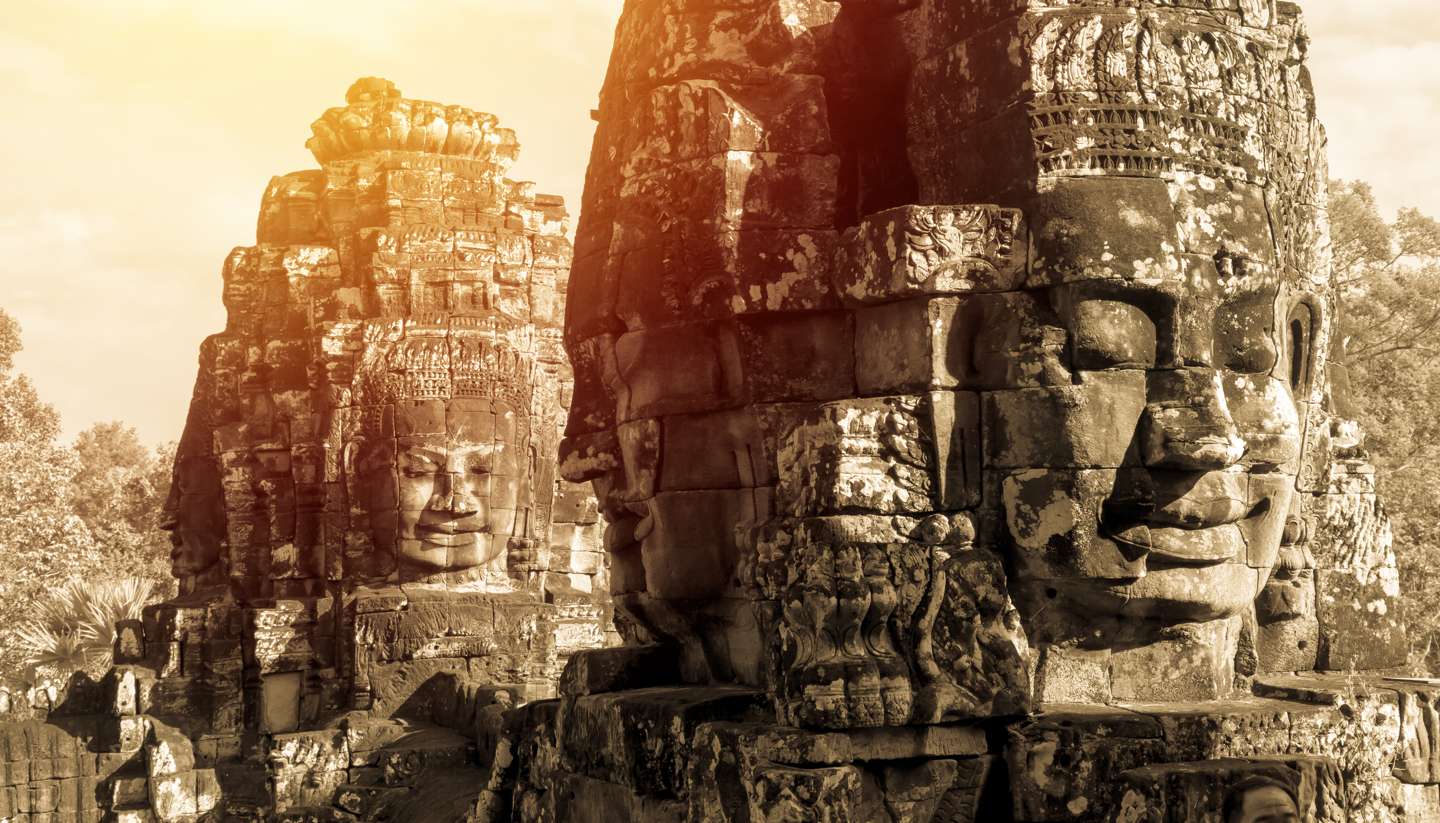
13 of the best lost cities
Determined archaeologists have helped to uncover ancient lost cities and put them on the map again, and here are our top picks
Book a Hotel
© Columbus Travel Media Ltd. All rights reserved 2024
- BECOME A MEMBER

INGUAT: A new era with Harris Whitbeck
Harris whitbeck, an experienced journalist and television producer, has been appointed director general of the guatemalan institute of tourism (inguat) for the period 2024-2028. this appointment, made by the government of the new president bernardo arévalo, marks an important turning point for tourism in guatemala ..
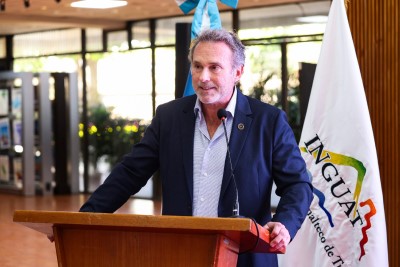
“Today, joining the INGUAT team as director allows me to serve my country, presenting our best stories to the world and thus stimulating development through tourism in every corner of Guatemala”.
As an active member of various educational and tourism organisations, including the Guatemalan Chamber of Tourism (CAMTUR), Harris Whitbeck has demonstrated a deep commitment to the development of tourism and culture in Guatemala.
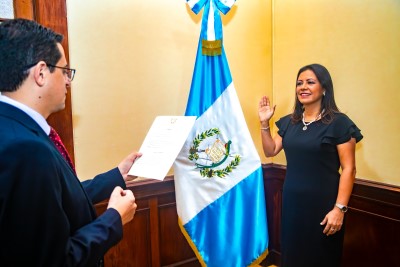
The main objective of INGUAT’s new management is to position Guatemala as one of Latin America’s top three destinations. The strategic plan for 2024-2028 includes promoting alliances with local communities and governments, entrepreneurs, tourism operators and public-private initiatives to improve airport and road infrastructures.
INGUAT’s new management is committed to promoting sustainable tourism and strengthening Guatemala’s position as a major tourist destination in Latin America.
Source and photos: INGUAT
RECENT POSTS

The Centre Pompidou in Foz do Iguaçu : A New Era for Art in Latin America
May 9, 2024
LATAM NEWS The Centre Pompidou in Foz do Iguaçu : A New Era for Art in Latin America Foz do Iguaçu, already renowned for its breathtaking natural landscapes, is preparing to become a new nerve centre for contemporary art with the inauguration of a branch of the Centre...
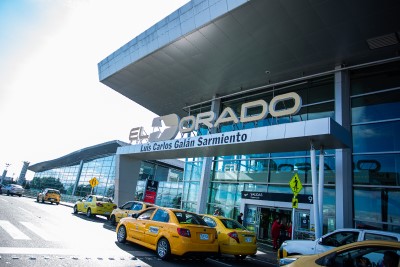
Bogotá’s El Dorado: voted best airport in South America
May 8, 2024
LATAM NEWS Bogotá's El Dorado: voted best airport in South America Bogotá's El Dorado International Airport has once again distinguished itself on the world stage, being recognised as the best airport in South America in 2024 by the prestigious Skytrax survey. This...
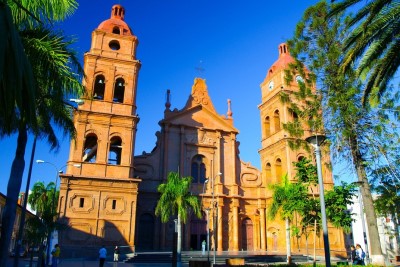
Santa Cruz de la Sierra : Oasis of Culture and Flavour in the Heart of Bolivia
May 7, 2024
DESTINATIONSSanta Cruz de la Sierra : Oasis of Culture and Flavour in the Heart of BoliviaSanta Cruz de la Sierra, or Santa Cruz, is Bolivia's largest city and the country's economic heart. It combines a rich history and culture with a surprising modernity, while...
You may also like:
Share this article:, submit a comment.
You must be logged in to post a comment.

Inguat provides information and assistance to tourists
Guatemala City, Apr 6 (AGN).- Six information and assistance kiosks have enabled the Guatemalan Institute of Tourism (Inguat) to support domestic and foreign who visit different attractions of the country.
Since Dolores Friday, when the interdepartmental mobilization increased, the entity put these spaces into operation, in which trained personnel provide data on processional processions, hotels, restaurants and destinations offered by each jurisdiction.
Remember that the best way to travel is safely! 🤓🇬🇹🤝🏻 For this reason the #INGUAT makes available to national and international tourists who visit the incredible destinations of #Guatemala the Tourist Assistance number 1500 to provide information and support. pic.twitter.com/T47IBR7Lye — Guatemalan Institute of Tourism -INGUAT- (@InguatPrensa) March 14, 2023
For this purpose, there is graphic material that is delivered to those who request information. There are also the telephone numbers to which any emergency can be reported.
Because they are the most visited places, Inguat implemented kiosks in the capital city and Antigua Guatemala, Sacatepéquez. There are also in Panajachel, Sololá; Esquipulas, Chiquimula, and the departmental heads of Petén and Quetzaltenango. Attendance is from 8:00 a.m. to 5:00 p.m.
🚴🏼🪂 Would you like to know more about the tourism segment of #Adventure that promotes the #INGUAT ? ⬇️ We share more information about the importance of this segment in the tourism of #Guatemala as a development strategy. pic.twitter.com/894vjZtaSG — Guatemalan Institute of Tourism -INGUAT- (@InguatPrensa) March 25, 2023
Attention in offices
From last Friday until Easter Sunday, attention is also guaranteed in the 13 tourist information offices that the entity has. Among those that operate in the capital city are the headquarters, in zone 4, and La Aurora International Airport, zone 13.
Other municipalities in which coverage is available are the following:
- Antigua Guatemala, Sacatepequez
- Panajachel, Solola
- Coban, Alta Verapaz
- Esquipulas, Chiquimula
- Chichicastenango, Quiche
- Flowers, Peten
Vacationers in the departmental capitals of Izabal, Retalhuleu and Quetzaltenango are also assisted. The enabled schedule is from 8:00 to 17:00.
In addition, attention is maintained at the 1500 call center and on the 2290-2810 line, as well as through social networks.
Inguat establishes institutional plan for Easter
Source link
guatemalalacapital_iqw7v5
With product you purchase, subscribe to our mailing list to get the new updates.
Lorem ipsum dolor sit amet, consectetur.
Related Articles

Inguat promotes cultural and natural wealth of Chiquimula

Camilo and Evaluna visited a cafeteria in Antigua Guatemala

Eco San Luis, an ecological hotel with viewpoints and giant sculptures in Sacatepéquez

The entrance registration to the Acatenango volcano will now be digital
Leave a reply cancel reply.
Your email address will not be published. Required fields are marked *
Save my name, email, and website in this browser for the next time I comment.

- GSTC Mission & Impacts
- GSTC History
- Market Access Program
- GSTC Board of Directors
- Assurance Panel
- Working Groups
- GSTC Sponsors
- GSTC Members
- Recruitment
- Contact GSTC
- GSTC For the Press
- Criteria Development, Feedback & Revisions
- Sustainable Tourism Glossary
- SDGs and GSTC Criteria
- GSTC Industry Criteria
- GSTC Destination Criteria
- GSTC MICE Criteria
- Criteria Translations
- GSTC-Recognized Standards for Hotels
- GSTC-Recognized Standards for Tour Operators
- GSTC-Recognized Standards for Destinations
- Recognition of Standards (for Standard Owners)
- GSTC-Committed
- Certification for Hotels
- Certification for Tour Operator
- Certification for Destination
- Accreditation for Certification Bodies
- Accredited Certification Bodies
- Stakeholder Consultations
- What is Certification? Accreditation? Recognition?
- Sustainable Tourism Training Program (STTP)
- Upcoming Courses
- Professional Certificate in Sustainable Tourism
- Professional Certificate in Sustainable Business Travel
- GSTC Trainers and Partners
- FAQs: GSTC Training Program
- Organization Membership Application
- Destination Membership Application
- Membership Policy
- Membership Categories & Fees
- Membership Payment Options
- Webinars for GSTC Members
- Members Log In
- Upcoming Webinars
- GSTC2024 Singapore, Nov 13-16
- Upcoming Conferences
- Past Conferences
- Destination Stewardship Report
The Guatemalan Tourism Board, INGUAT, Joins GSTC
January 2018 – The Guatemalan Tourism Board, INGUAT, has joined the Global Sustainable Tourism Council (GSTC) as a national member.
INGUAT (Instituto Guatemalteco de Turismo) is the national superior authority in the tourism sector that develops the promotion, advertising, and sustainability practices of tourism industry through the specific legal guidelines from Guatemala’s Government. Its mission is to strengthen and diversify the tourism products and services according to the land use planning of tourism areas in Guatemala.
INGUAT also encourages the implementation of quality and sustainable criteria through the certification systems “Sello Q” and “Sello Q Verde” that have been established in the Master Plan of Sustainable Tourism, Guatemala 2015-2025.
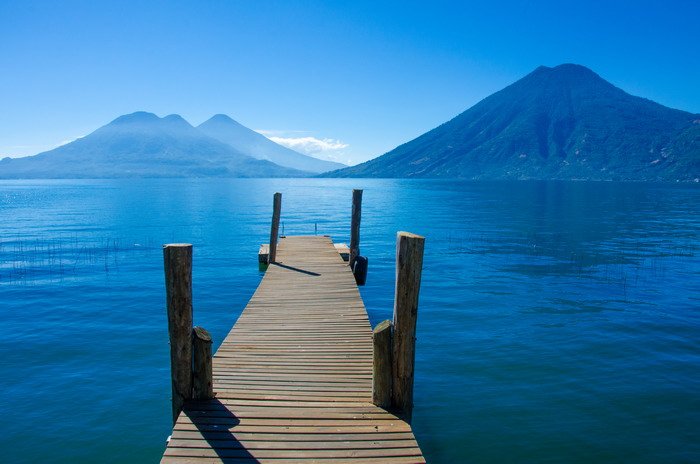
“We are very pleased to welcome the Guatemalan Tourism Board to GSTC,” says Luigi Cabrini, GSTC Chair. “Becoming a GSTC member involves taking a pledge to adhere to the GSTC Criteria — as an important step to follow universal sustainability principles in the management and development of their tourism. We are glad that the Guatemalan Tourism Board is using the GSTC Criteria in policy development and operational planning.”
“Having spent three years in Guatemala working for the United Nations, I am personally aware of the great potential of the country as a sustainable destination!” adds Mr. Cabrini.
“INGUAT has manifested its commitment to sustainable tourism,” says MBA Jorge Mario Chajón, INGUAT Director. “Being part of GSTC’s global network, our institution is playing a critical role in advancing the mission of promoting sustainable tourism practices around the world, helping to protect the natural and cultural resources of the country for sustainable development.”
“In addition, we are committed to work and have a positive impact by contributing to the GSTC’s mission, working with national and international associations, to improve sustainable tourism practices,” adds Mr. Chajón.
GSTC encourages destinations pursuing sustainability practices in development and management of tourism, to join as GSTC members and apply the GSTC Destination Criteria , which eventually can lead to being certified by a GSTC-Accredited Certification Body .
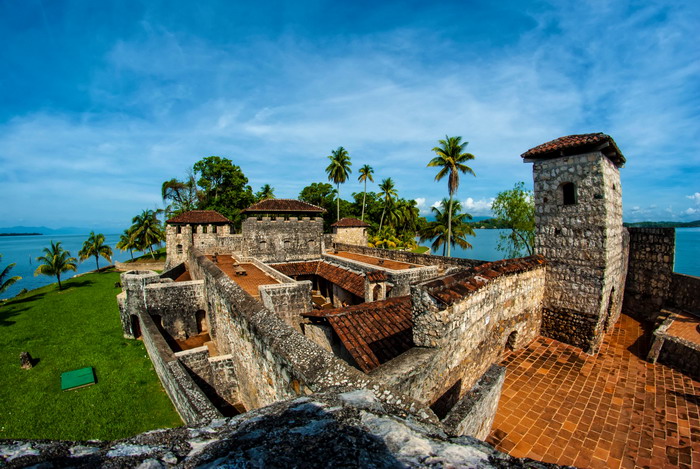
Share This Story, Choose Your Platform!
Related posts.
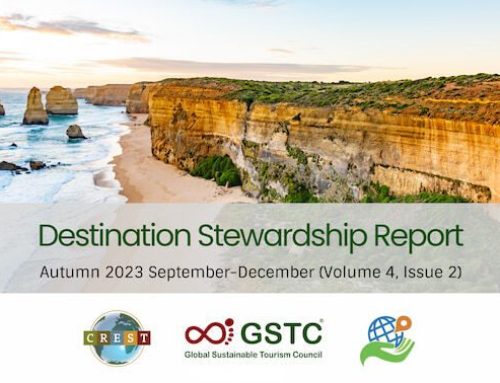
Destination Stewardship Report – Autumn 2023 (Volume 4, Issue 2)
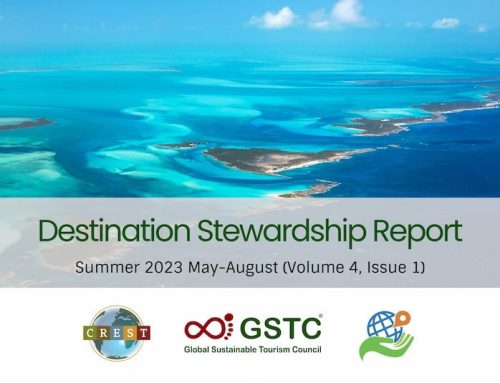
Destination Stewardship Report – Summer 2023 (Volume 4, Issue 1)
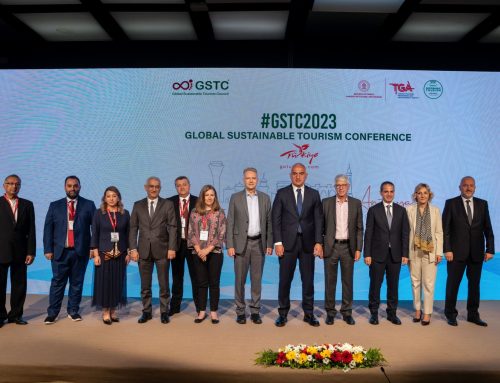
GSTC2023 Conference in Antalya, Türkiye, Concluded with 350 delegates from 51 countries
Update May 10, 2024
Information for u.s. citizens in the middle east.
- Travel Advisories |
- Contact Us |
- MyTravelGov |
Find U.S. Embassies & Consulates
Travel.state.gov, congressional liaison, special issuance agency, u.s. passports, international travel, intercountry adoption, international parental child abduction, records and authentications, popular links, travel advisories, mytravelgov, stay connected, legal resources, legal information, info for u.s. law enforcement, replace or certify documents, country information.
Share this page:
Travel Advisory July 17, 2023
Guatemala - level 3: reconsider travel.
Reissued with obsolete COVID-19 page links removed.
Reconsider travel to Guatemala due to crime . Some areas have increased risk. Read the entire Travel Advisory.
Do not travel to:
- San Marcos Department (except the city of San Marcos) due to crime .
- Huehuetenango Department (except the city of Huehuetenango) due to crime .
- Zone 18 and the city of Villa Nueva in Guatemala City due to crime .
Country Summary: Violent crime such as extortion, murder, armed robbery, carjacking, narcotics trafficking and gang activity are common in Guatemala. Local police may lack the resources to respond effectively to criminal incidents resulting in a low arrest and conviction rate. Guatemala’s National Tourist Assistance Program ( PROATUR ) provides 24-hour emergency assistance and routine guidance to tourists. PROATUR also provide additional security in locations frequented by tourists. The call center is staffed with Spanish and English speakers and can be reached 24/7 by calling 1500 or +502-2290-2800.
U.S. government personnel and family members are prohibited from traveling to/throughout the above-mentioned areas for personal travel but are permitted to travel throughout the rest of Guatemala, including tourist destinations such as Tikal, Antigua, Lake Atitlán, and Pacific coast areas in the Santa Rosa and Escuintla Departments.
Read the country information page for additional information on travel to Guatemala.
If you decide to travel to Guatemala:
- When traveling to Lake Atitlán, use certified tourist providers and travel between villages on the lakeshore by chartered boat, as perimeter paths pose a serious crime risk and are not easily accessible by emergency services. Hiking in the area, while popular, is best undertaken with the assistance of a local guide to ensure safety, as criminals are known to target some routes.
- When visiting Pacific coast beaches and resorts in the Santa Rosa and Escuintla Departments, arrange travel through hotel, resort, or charter agents. We recommend traveling to and from hotels, resorts, and fishing charters via road from Guatemala City during daylight hours only.
- Visitors are strongly advised to avoid swimming in the Pacific Ocean, since currents and undertows are strong, and beaches lack adequate lifeguards or emergency response.
- Visitors should not leave drinks unattended in bars and restaurants and are advised to decline invitations from strangers to private parties or gatherings.
- Consider staying in hotels or other lodging facilities that offer secure parking, doormen, and a dedicated and professional security staff.
- Request security escorts, which are available for tourist groups, from the Guatemalan Tourism Institute ( INGUAT ).
- Be aware of your surroundings and avoid walking or driving at night.
- Do take radio-dispatched taxis (Taxi Amarillo), INGUAT-approved taxis from the “SAFE” stand at the airport, hotel taxis, vetted private drivers, and/or Uber.
- Do not take public transportation, including white car taxis. U.S. government personnel and their family members are prohibited from using these forms of transportation.
- Do not attempt to hike walking trails or volcanoes without the services of a qualified local guide. Robberies are commonplace, and emergency response is lacking.
- Do not physically resist any robbery attempt.
- Do not use public ATMs.
- Do not display signs of wealth, such as wearing expensive watches or jewelry, and avoid using mobile devices in public.
- Enroll in the Smart Traveler Enrollment Program (STEP) to receive Alerts while in Guatemala and make it easier to locate you in an emergency.
- Follow the Department of State on Facebook and Twitter .
- Review the Country Security Report for Guatemala.
- Prepare a contingency plan for emergency situations. Review the Traveler’s Checklist .
- Visit the CDC page for the latest Travel Health Information related to your travel.
San Marcos Department – Level 4: Do Not Travel
All U.S. government personnel and family members are prohibited from traveling to San Marcos Department for personal travel, except for the city of San Marcos. Narcotics trafficking is widespread, and large portions of the department are under the influence of drug trafficking organizations. Several municipalities lack police presence, and local police may lack the resources to respond effectively to serious criminal incidents. Avoid areas outside of major roads and highways. Visit our website for Travel to High-Risk Areas .
Huehuetenango Department – Level 4: Do Not Travel
All U.S. government personnel and family members are prohibited from traveling to Huehuetenango Department for personal travel, except for the city of Huehuetenango. Narcotics trafficking is widespread, and large portions of the department are under the influence of drug trafficking organizations. Several municipalities lack police presence, and local police may lack the resources to respond effectively to serious criminal incidents. Avoid areas outside of major roads and highways.
Visit our website for Travel to High-Risk Areas .
Zone 18 and Villa Nueva within the Guatemala Department – Level 4: Do Not Travel
U.S. government personnel and family members are free to travel within Guatemala City except for zone 18 and the municipality of Villa Nueva. The following zones in Guatemala City are of elevated concern due to crime: 5, 6, 7, 12, 13, 17, 19, 21, and 24. U.S. citizens should take appropriate security measures when traveling to and from the airport such as only using vetted transportation services, not displaying valuables or other signs of wealth, refraining from using mobile devices in public, and not lingering outside the airport. U.S. citizens are advised not to hail white-car taxis on the street in Guatemala City. Use radio-dispatched taxis (Taxi Amarillo), INGUAT-approved taxis from the “SAFE” stand at the airport, hotel taxis, vetted private drivers, or Uber.
Hague Convention Participation
What you can do, embassies and consulates.
U.S. Embassy Guatemala City
Boulevard Austriaco 11-51, Zone 16 Guatemala City, Guatemala Telephone: +(502) 2354-0000 Emergency After-Hours Telephone: +(502) 2354-0000 [email protected]
General Information
Guatemala and the United States have been treaty partners under the 1980 Hague Convention on the Civil Aspects of International Child Abduction (Hague Abduction Convention) since January 1, 2008.
For information concerning travel to Guatemala, including information about the location of the U.S. Embassy, the Smart Traveler Enrollment Program, entry/exit requirements, safety and security, crime, medical facilities and health information, traffic safety, road conditions and aviation safety, please see country-specific informatio n for Guatemala.
The U.S. Department of State reports statistics and compliance information for individual countries in the Annual Report on International Child Abduction. The report is located here .
Hague Abduction Convention
The U.S. Department of State serves as the U.S. Central Authority (USCA) for the Hague Abduction Convention. In this capacity, the Departmen's Bureau of Consular Affairs, Directorate for Overseas Citizens Services, Office of Children's Issues facilitates the submission of applications under the Hague Abduction Convention for the return of, or access to, children located in countries that are U.S. treaty partners, including Guatemala. Parents are strongly encouraged to contact the Department of State for assistance prior to initiating the Hague process directly with the foreign Central Authority.
Contact information:
U.S. Department of State Bureau of Consular Affairs Office of Children's Issues CA/OCS/CI SA-17, 9th Floor Washington, DC 20522-1709 Telephone: 1-888-407-4747 Fax: 202-485-6221 Outside the United States or Canada: 1-202-501-4444 Website
The Guatemalan Central Authority for the Hague Abduction Convention is the Procuraduría General de la Nación, (PGN). The PGN’s role is to perform the duties given to central authorities under the Hague Abduction Convention, including processing Hague Abduction Convention applications for return of and access to children. They can be reached at:
Procuraduría General de la Nación 15th Avenue 9-69, Zone 13 Guatemala City, Guatemala 010013 Licda. Sara Payes Tel. 22148787 ext. 2011 Email: [email protected] Website :
To initiate a Hague case for the return of, or access to, a child in Guatemala, the left-behind parent must complete a Hague application and submit it to the PGN . The USCA is available to answer questions about the Hague application process, to forward a completed application to the PGN, and to subsequently monitor its progress through the foreign administrative and legal processes.
There are no fees for filing Hague applications with either the United States or Guatemalan central authorities. After the case is filed and accepted with the PGN, the PGN assigns an attorney to represent the Hague Convention application during the Hague judicial process in Guatemala, at no cost. It is important to note that the attorney does not represent either parent's interests; rather, the attorney represents the Hague Convention application. Additional costs may include airplane tickets for court appearances and for the return of the child, if so ordered.
A parent or legal guardian may file an application under the Hague Abduction Convention for return to the United States of a child abducted to, or wrongfully retained in, Guatemala. The U.S. Department of State can assist parents living in the United States to understand whether the Convention is an available civil remedy and can provide information on the process for submitting a Hague application.
Visitation/Access
A person may file an application under the Hague Abduction Convention for access to a child living in Guatemala. Once the case has been filed with the Court at the request of the left-behind parent visitation rights will be re-established. The U.S. Department of State can assist parents living in the United States to understand country-specific criteria and provide information on the process for submitting a Hague application.
Retaining an Attorney
Retaining a private attorney is not required in order to file Hague Convention applications with courts in Guatemala. The PGN assigns an attorney to represent the Hague Abduction Convention application. While not required, a parent may choose to hire a private attorney to represent his/her interests in the case. If a parent retains a private attorney, the attorney should contact the PGN as soon as possible after the filing of the Hague Abduction Convention application.
The U.S. Embassy in Guatemala City maintains a list of attorneys on its website.
This list is provided as a courtesy service only and does not constitute an endorsement of any individual attorney. The Department of State assumes no responsibility or liability for the professional ability or reputation of, or the quality of services provided by, the following persons or firms. Professional credentials and areas of expertise are provided directly by the lawyers.
Guatemalan law requires that a mediation meeting take place in every civil and family dispute, including Hague Abduction Convention cases, prior to a court’s hearing of the case. During this meeting, the judge informs the interested parties of the benefits of mediation. If the parties decline to pursue mediation, the case proceeds to litigation.
If the parties are interested in mediation, they must secure a private mediator as neither the court nor the GCA provides mediation services.
Exercising Custody Rights
While travelling in a foreign country, you are subject to the laws of that country. It is important for parents to understand that, although a left-behind parent in the United States may have custody or visitation rights pursuant to a U.S. custody order, that order may not be valid and enforceable in the country in which the child is located. For this reason, we strongly encourage you to speak to a local attorney if planning to remove a child from a foreign country without the consent of the other parent. Attempts to remove your child to the United States may:
- Endanger your child and others;
- Prejudice any future judicial efforts; and
- Could result in your arrest and imprisonment.
The U.S. government cannot interfere with another country’s court or law enforcement system.
To understand the legal effect of a U.S. order in a foreign country, a parent should consult with a local attorney in the country in which the child is located.
For information about hiring an attorney abroad, see our section on Retaining a Foreign Attorney.
Although we cannot recommend an attorney to you, most U.S. Embassies have lists of attorneys available online. Please visit the local U.S. Embassy or Consulate website for a full listing.
For more information on consular assistance for U.S. citizens arrested abroad, please see our website .
Country officers are available to speak with you Monday - Friday, 8:00 a.m. - 5:00 p.m. For assistance with an abduction in progress or any emergency situation that occurs after normal business hours, on weekends, or federal holidays, please call toll free at 1-888-407-4747. See all contact information .
DISCLAIMER: The information in this flyer is provided for general information only, is not intended to be legal advice, and may change without notice. Questions involving interpretation of law should be addressed to an attorney licensed in the relevant jurisdiction.
Assistance for U.S. Citizens
Guatemala map, learn about a country.
Afghanistan
Antigua and Barbuda
Bonaire, St. Eustatius, and Saba (BES)
Bosnia and Herzegovina (BiH)
British Virgin Islands
Burkina Faso
Cayman Islands
Central African Republic
Curaçao
Czech Republic
Côte d'Ivoire (Ivory Coast)
Democratic Republic of the Congo
Dominican Republic
El Salvador
Equatorial Guinea
French Guiana
French Polynesia
Guinea-Bissau
Israel, the West Bank and Gaza
Liechtenstein
Marshall Islands
Netherlands
New Caledonia
New Zealand
North Korea (Democratic People's Republic of Korea)
North Macedonia
Papua New Guinea
Philippines
Republic of the Congo
Saint Barthélemy
Saint Kitts and Nevis
Saint Lucia
Saint Martin
Saint Vincent and the Grenadines
Sao Tome and Principe
Saudi Arabia
Sierra Leone
Sint Maarten
Solomon Islands
South Africa
South Korea (Republic of Korea)
South Sudan
Switzerland
The Bahamas
Timor-Leste
Trinidad and Tobago
Turkmenistan
Turks and Caicos Islands
United Arab Emirates
United Kingdom
Vatican City (Holy See)
External Link
You are about to leave travel.state.gov for an external website that is not maintained by the U.S. Department of State.
Links to external websites are provided as a convenience and should not be construed as an endorsement by the U.S. Department of State of the views or products contained therein. If you wish to remain on travel.state.gov, click the "cancel" message.
You are about to visit:
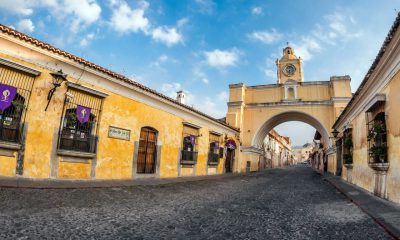
Travel Agency Palasan Tour
Choose the travel agency Palasan Tour to organize your trip in Guatemala! We are a Tour Operator and Travel Agency in Guatemala. We offer alternative routes, hotels, private transportation, shuttle, flights to Tikal and Tours for your excursions in Guatemala.
We guarantee you a unique service at the best price to make your trip in Guatemala. Palasan Tour is a travel agency and a tour operator specializing in tailor-made round trips. We offer you to discover Guatemala.
Our agency was created in 2004. We are member of the INGUAT since 28 April 2004 (INGUAT = Guatemalan Institute of Tourism). Moreover, we invite you to find all information on this website about your travel in Guatemala.
Our travel and tourism agency will always know how to serve you.
Guatemala Shuttles
Shuttle from airport to antigua guatemala, shuttle from antigua guatemala hacia el aeropuerto, shuttle from antigua guatemala to semuc champey, shuttle from antigua guatemala to airport, shuttle from antigua guatemala to panajachel (atitlán lake), shuttle from panajachel (atitlán lake) to antigua guatemala, shuttle from antigua guatemala to río dulce, shuttle from antigua guatemala to cobán, guatemala destinations.
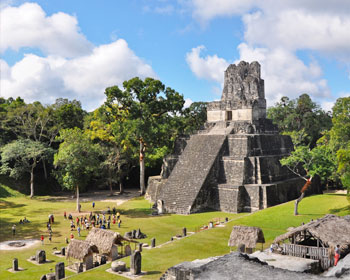
Guatemala Tours
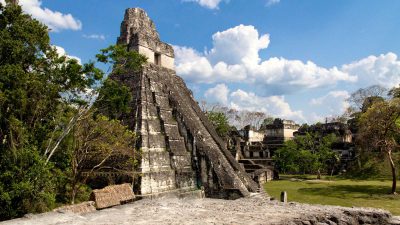
Tikal Tour by Plane
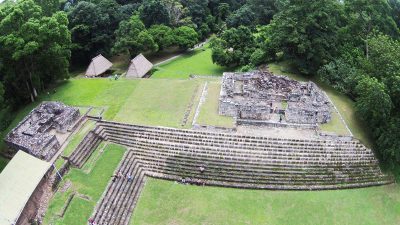
Quiriguá, Puerto Barrios and Tikal Tour
Puerto Barrios, Quiriguá, Tikal
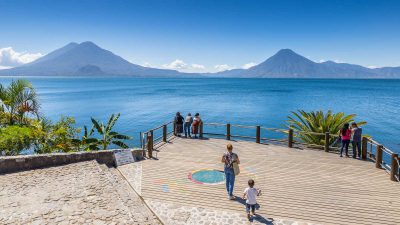
Lake Atitlán Tour
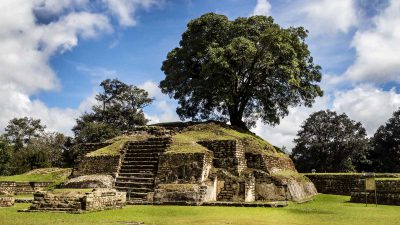
Iximché Tour
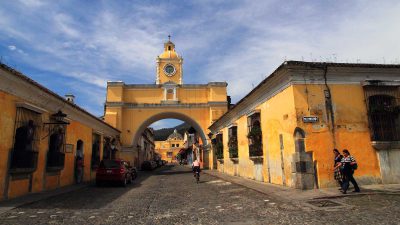
Villages Tour Around Antigua
Antigua Guatemala
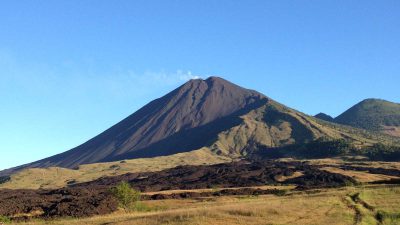
Pacaya Volcano
- Private Transportation
- Shared Shuttle Service
- Boat tours on Lake Atitlan
- Paragliding on Lake Atitlán

We are a reliable travel agency operating since 1995, which offers safe and comfortable travels to our costumers around the country. Additionally, we provide a wonderful experience of sustainable tourism in Guatemala, preserving the environment, improving a fulfilling experiencie to our tourists and visitors.
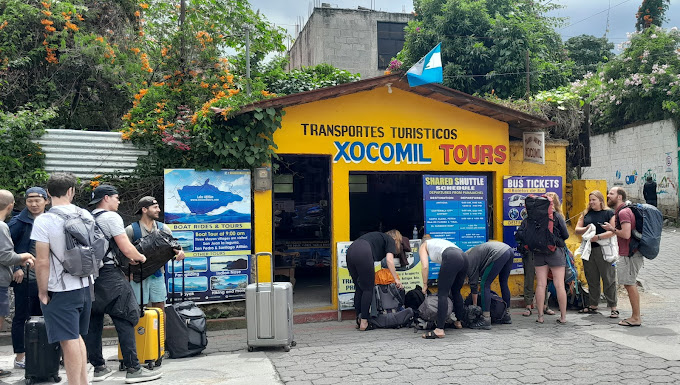
Private Transportation Guatemala

Shared shuttle Service in Guatemala
Tour solola market & concepción.

We’re sorry, this site is currently experiencing technical difficulties. Please try again in a few moments. Exception: request blocked

Travel Itinerary For One Week in Moscow: The Best of Moscow!
I just got back from one week in Moscow. And, as you might have already guessed, it was a mind-boggling experience. It was not my first trip to the Russian capital. But I hardly ever got enough time to explore this sprawling city. Visiting places for business rarely leaves enough time for sightseeing. I think that if you’ve got one week in Russia, you can also consider splitting your time between its largest cities (i.e. Saint Petersburg ) to get the most out of your trip. Seven days will let you see the majority of the main sights and go beyond just scratching the surface. In this post, I’m going to share with you my idea of the perfect travel itinerary for one week in Moscow.
Moscow is perhaps both the business and cultural hub of Russia. There is a lot more to see here than just the Kremlin and Saint Basil’s Cathedral. Centuries-old churches with onion-shaped domes dotted around the city are in stark contrast with newly completed impressive skyscrapers of Moscow City dominating the skyline. I spent a lot of time thinking about my Moscow itinerary before I left. And this city lived up to all of my expectations.

Travel Itinerary For One Week in Moscow
Day 1 – red square and the kremlin.
Metro Station: Okhotny Ryad on Red Line.
No trip to Moscow would be complete without seeing its main attraction. The Red Square is just a stone’s throw away from several metro stations. It is home to some of the most impressive architectural masterpieces in the city. The first thing you’ll probably notice after entering it and passing vendors selling weird fur hats is the fairytale-like looking Saint Basil’s Cathedral. It was built to commemorate one of the major victories of Ivan the Terrible. I once spent 20 minutes gazing at it, trying to find the perfect angle to snap it. It was easier said than done because of the hordes of locals and tourists.
As you continue strolling around Red Square, there’s no way you can miss Gum. It was widely known as the main department store during the Soviet Era. Now this large (yet historic) shopping mall is filled with expensive boutiques, pricey eateries, etc. During my trip to Moscow, I was on a tight budget. So I only took a retro-style stroll in Gum to get a rare glimpse of a place where Soviet leaders used to grocery shop and buy their stuff. In case you want some modern shopping experience, head to the Okhotny Ryad Shopping Center with stores like New Yorker, Zara, and Adidas.

Read Next: Things To Do on Socotra
To continue this Moscow itinerary, next you may want to go inside the Kremlin walls. This is the center of Russian political power and the president’s official residence. If you’re planning to pay Kremlin a visit do your best to visit Ivan the Great Bell Tower as well. Go there as early as possible to avoid crowds and get an incredible bird’s-eye view. There are a couple of museums that are available during designated visiting hours. Make sure to book your ticket online and avoid lines.
Day 2 – Cathedral of Christ the Saviour, the Tretyakov Gallery, and the Arbat Street
Metro Station: Kropotkinskaya on Red Line
As soon as you start creating a Moscow itinerary for your second day, you’ll discover that there are plenty of metro stations that are much closer to certain sites. Depending on your route, take a closer look at the metro map to pick the closest.
The white marble walls of Christ the Saviour Cathedral are awe-inspiring. As you approach this tallest Orthodox Christian church, you may notice the bronze sculptures, magnificent arches, and cupolas that were created to commemorate Russia’s victory against Napoleon.

How to Get a Decent Haircut in a Foreign Country
Unfortunately, the current Cathedral is a replica, since original was blown to bits in 1931 by the Soviet government. The new cathedral basically follows the original design, but they have added some new elements such as marble high reliefs.
Home to some precious collection of artworks, in Tretyakov Gallery you can find more than 150,000 of works spanning centuries of artistic endeavor. Originally a privately owned gallery, it now has become one of the largest museums in Russia. The Gallery is often considered essential to visit. But I have encountered a lot of locals who have never been there.
Famous for its souvenirs, musicians, and theaters, Arbat street is among the few in Moscow that were turned into pedestrian zones. Arbat street is usually very busy with tourists and locals alike. My local friend once called it the oldest street in Moscow dating back to 1493. It is a kilometer long walking street filled with fancy gift shops, small cozy restaurants, lots of cute cafes, and street artists. It is closed to any vehicular traffic, so you can easily stroll it with kids.
Day 3 – Moscow River Boat Ride, Poklonnaya Hill Victory Park, the Moscow City
Metro Station: Kievskaya and Park Pobedy on Dark Blue Line / Vystavochnaya on Light Blue Line
Voyaging along the Moscow River is definitely one of the best ways to catch a glimpse of the city and see the attractions from a bit different perspective. Depending on your Moscow itinerary, travel budget and the time of the year, there are various types of boats available. In the summer there is no shortage of boats, and you’ll be spoiled for choice.

Travel Itinerary for One Week in Beijing
If you find yourself in Moscow during the winter months, I’d recommend going with Radisson boat cruise. These are often more expensive (yet comfy). They offer refreshments like tea, coffee, hot chocolate, and, of course, alcoholic drinks. Prices may vary but mostly depend on your food and drink selection. Find their main pier near the opulent Ukraine hotel . The hotel is one of the “Seven Sisters”, so if you’re into the charm of Stalinist architecture don’t miss a chance to stay there.
The area near Poklonnaya Hill has the closest relation to the country’s recent past. The memorial complex was completed in the mid-1990s to commemorate the Victory and WW2 casualties. Also known as the Great Patriotic War Museum, activities here include indoor attractions while the grounds around host an open-air museum with old tanks and other vehicles used on the battlefield.
How I Planned My Trip to Vietnam
The hallmark of the memorial complex and the first thing you see as you exit metro is the statue of Nike mounted to its column. This is a very impressive Obelisk with a statue of Saint George slaying the dragon at its base.
Maybe not as impressive as Shanghai’s Oriental Pearl Tower , the skyscrapers of the Moscow City (otherwise known as Moscow International Business Center) are so drastically different from dull Soviet architecture. With 239 meters and 60 floors, the Empire Tower is the seventh highest building in the business district.
The observation deck occupies 56 floor from where you have some panoramic views of the city. I loved the view in the direction of Moscow State University and Luzhniki stadium as well to the other side with residential quarters. The entrance fee is pricey, but if you’re want to get a bird’s eye view, the skyscraper is one of the best places for doing just that.
Day 4 – VDNKh, Worker and Collective Farm Woman Monument, The Ostankino TV Tower
Metro Station: VDNKh on Orange Line
VDNKh is one of my favorite attractions in Moscow. The weird abbreviation actually stands for Russian vystavka dostizheniy narodnogo khozyaystva (Exhibition of Achievements of the National Economy). With more than 200 buildings and 30 pavilions on the grounds, VDNKh serves as an open-air museum. You can easily spend a full day here since the park occupies a very large area.

Places to Visit in Barcelona That Aren’t Beaches
First, there are pavilions that used to showcase different cultures the USSR was made of. Additionally, there is a number of shopping pavilions, as well as Moskvarium (an Oceanarium) that features a variety of marine species. VDNKh is a popular venue for events and fairs. There is always something going on, so I’d recommend checking their website if you want to see some particular exhibition.
A stone’s throw away from VDNKh there is a very distinctive 25-meters high monument. Originally built in 1937 for the world fair in Paris, the hulking figures of men and women holding a hammer and a sickle represent the Soviet idea of united workers and farmers. It doesn’t take much time to see the monument, but visiting it gives some idea of the Soviet Union’s grandiose aspirations.
I have a thing for tall buildings. So to continue my travel itinerary for one week in Moscow I decided to climb the fourth highest TV tower in the world. This iconic 540m tower is a fixture of the skyline. You can see it virtually from everywhere in Moscow, and this is where you can get the best panoramic views (yep, even better than Empire skyscraper).

Parts of the floor are made of tempered glass, so it can be quite scary to exit the elevator. But trust me, as you start observing buildings and cars below, you won’t want to leave. There is only a limited number of tickets per day, so you may want to book online. Insider tip: the first tour is cheaper, you can save up to $10 if go there early.
Day 5 – A Tour To Moscow Manor Houses
Metro Station: Kolomenskoye, Tsaritsyno on Dark Green Line / Kuskovo on Purple Line
I love visiting the manor houses and palaces in Moscow. These opulent buildings were generally built to house Russian aristocratic families and monarchs. Houses tend to be rather grand affairs with impressive architecture. And, depending on the whims of the owners, some form of a landscaped garden.
During the early part of the 20th century though, many of Russia’s aristocratic families (including the family of the last emperor) ended up being killed or moving abroad . Their manor houses were nationalized. Some time later (after the fall of the USSR) these were open to the public. It means that today a great many of Moscow’s finest manor houses and palaces are open for touring.

20 Travel Tips I’ve Learned From Travelling The World
There are 20 manor houses scattered throughout the city and more than 25 in the area around. But not all of them easily accessible and exploring them often takes a lot of time. I’d recommend focusing on three most popular estates in Moscow that are some 30-minute metro ride away from Kremlin.
Sandwiched between the Moscow River and the Andropov Avenue, Kolomenskoye is a UNESCO site that became a public park in the 1920’s. Once a former royal estate, now it is one of the most tranquil parks in the city with gorgeous views. The Ascension Church, The White Column, and the grounds are a truly grand place to visit.
You could easily spend a full day here, exploring a traditional Russian village (that is, in fact, a market), picnicking by the river, enjoying the Eastern Orthodox church architecture, hiking the grounds as well as and wandering the park and gardens with wildflower meadows, apple orchards, and birch and maple groves. The estate museum showcases Russian nature at its finest year-round.
12 Stunning National Parks and Regional Parks In France
If my travel itinerary for one week in Moscow was a family tree, Tsaritsyno Park would probably be the crazy uncle that no-one talks about. It’s a large park in the south of the city of mind-boggling proportions, unbelievable in so many ways, and yet most travelers have never heard of it.
The palace was supposed to be a summer home for Empress Catherine the Great. But since the construction didn’t meet with her approval the palace was abandoned. Since the early 1990’s the palace, the pond, and the grounds have been undergoing renovations. The entire complex is now looking brighter and more elaborately decorated than at possibly any other time during its history. Like most parks in Moscow, you can visit Tsaritsyno free of charge, but there is a small fee if you want to visit the palace.

How To Stop Procrastinating When Trip Planning
Last, but by no means least on my Moscow itinerary is Kuskovo Park . This is definitely an off-the-beaten-path place. While it is not easily accessible, you will be rewarded with a lack of crowds. This 18th-century summer country house of the Sheremetev family was one of the first summer country estates of the Russian nobility. And when you visit you’ll quickly realize why locals love this park.
Like many other estates, Kuskovo has just been renovated. So there are lovely French formal garden, a grotto, and the Dutch house to explore. Make sure to plan your itinerary well because the estate is some way from a metro station.
Day 6 – Explore the Golden Ring
Creating the Moscow itinerary may keep you busy for days with the seemingly endless amount of things to do. Visiting the so-called Golden Ring is like stepping back in time. Golden Ring is a “theme route” devised by promotion-minded journalist and writer Yuri Bychkov.
Having started in Moscow the route will take you through a number of historical cities. It now includes Suzdal, Vladimir, Kostroma, Yaroslavl and Sergiev Posad. All these awe-inspiring towns have their own smaller kremlins and feature dramatic churches with onion-shaped domes, tranquil residential areas, and other architectural landmarks.
Two Weeks In Thailand: The Perfect 14-Day Itinerary
I only visited two out of eight cities included on the route. It is a no-brainer that Sergiev Posad is the nearest and the easiest city to see on a day trip from Moscow. That being said, you can explore its main attractions in just one day. Located some 70 km north-east of the Russian capital, this tiny and overlooked town is home to Trinity Lavra of St. Sergius, UNESCO Site.

You Will Also Like: 3-Day London Itinerary
Sergiev Posad is often described as being at the heart of Russian spiritual life. So it is uncommon to see the crowds of Russian pilgrims showing a deep reverence for their religion. If you’re traveling independently and using public transport, you can reach Sergiev Posad by bus (departs from VDNKh) or by suburban commuter train from Yaroslavskaya Railway Station (Bahnhof). It takes about one and a half hours to reach the town.
Trinity Lavra of St. Sergius is a great place to get a glimpse of filling and warming Russian lunch, specifically at the “ Gostevaya Izba ” restaurant. Try the duck breast, hearty potato and vegetables, and the awesome Napoleon cake.
Day 7 – Gorky Park, Izmailovo Kremlin, Patriarch’s Ponds
Metro Station: Park Kultury or Oktyabrskaya on Circle Line / Partizanskaya on Dark Blue Line / Pushkinskaya on Dark Green Line
Gorky Park is in the heart of Moscow. It offers many different types of outdoor activities, such as dancing, cycling, skateboarding, walking, jogging, and anything else you can do in a park. Named after Maxim Gorky, this sprawling and lovely park is where locals go on a picnic, relax and enjoy free yoga classes. It’s a popular place to bike around, and there is a Muzeon Art Park not far from here. A dynamic location with a younger vibe. There is also a pier, so you can take a cruise along the river too.

How to Save Money While Traveling in Europe
The Kremlin in Izmailovo is by no means like the one you can find near the Red Square. Originally built for decorative purposes, it now features the Vernissage flea market and a number of frequent fairs, exhibitions, and conferences. Every weekend, there’s a giant flea market in Izmailovo, where dozens of stalls sell Soviet propaganda crap, Russian nesting dolls, vinyl records, jewelry and just about any object you can imagine. Go early in the morning if you want to beat the crowds.
All the Bulgakov’s fans should pay a visit to Patriarch’s Ponds (yup, that is plural). With a lovely small city park and the only one (!) pond in the middle, the location is where the opening scene of Bulgakov’s novel Master and Margarita was set. The novel is centered around a visit by Devil to the atheistic Soviet Union is considered by many critics to be one of the best novels of the 20th century. I spent great two hours strolling the nearby streets and having lunch in the hipster cafe.
Conclusion and Recommendations
To conclude, Moscow is a safe city to visit. I have never had a problem with getting around and most locals are really friendly once they know you’re a foreigner. Moscow has undergone some serious reconstruction over the last few years. So you can expect some places to be completely different. I hope my one week Moscow itinerary was helpful! If you have less time, say 4 days or 5 days, I would cut out day 6 and day 7. You could save the Golden Ring for a separate trip entirely as there’s lots to see!
What are your thoughts on this one week Moscow itinerary? Are you excited about your first time in the city? Let me know in the comments below!
JOIN MY FREE WEEKLY NEWSLETTER!
Email Address *
YOU WILL ALSO LIKE

10 Dishes You Must Try When Going To Moscow

15 Fantastic and Easy Day Trips Close to Moscow

When Is the Best Time To Visit Russia
24 comments.
Ann Snook-Moreau
Moscow looks so beautiful and historic! Thanks for including public transit information for those of us who don’t like to rent cars.
MindTheTravel
Yup, that is me 🙂 Rarely rent + stick to the metro = Full wallet!
Mariella Blago
Looks like you had loads of fun! Well done. Also great value post for travel lovers.
Thanks, Mariella!
I have always wanted to go to Russia, especially Moscow. These sights look absolutely beautiful to see and there is so much history there!
Agree! Moscow is a thousand-year-old city and there is definitely something for everyone.
Tara Pittman
Those are amazing buildings. Looks like a place that would be amazing to visit.
Adriana Lopez
Never been to Moscow or Russia but my family has. Many great spots and a lot of culture. Your itinerary sounds fantastic and covers a lot despite it is only a short period of time.
What was their favourite thing about Russia?
Gladys Parker
I know very little about Moscow or Russia for the\at matter. I do know I would have to see the Red Square and all of its exquisite architectural masterpieces. Also the CATHEDRAL OF CHRIST THE SAVIOUR. Thanks for shedding some light on visiting Moscow.
Thanks for swinging by! The Red Square is a great starting point, but there way too many places and things to discover aside from it!
Ruthy @ Percolate Kitchen
You are making me so jealous!! I’ve always wanted to see Russia.
Moscow is in my bucket list, I don’t know when I can visit there, your post is really useful. As a culture rich place we need to spend at least week.
DANA GUTKOWSKI
Looks like you had a great trip! Thanks for all the great info! I’ve never been in to Russia, but this post makes me wanna go now!
Wow this is amazing! Moscow is on my bucket list – such an amazing place to visit I can imagine! I can’t wait to go there one day!
The building on the second picture looks familiar. I keep seeing that on TV.
Reesa Lewandowski
What beautiful moments! I always wish I had the personality to travel more like this!
Perfect itinerary for spending a week in Moscow! So many places to visit and it looks like you had a wonderful time. I would love to climb that tower. The views I am sure must have been amazing!
I was lucky enough to see the skyline of Moscow from this TV Tower and it is definitely mind-blowing.
Chelsea Pearl
Moscow is definitely up there on my travel bucket list. So much history and iconic architecture!
Thumbs up! 🙂
Blair Villanueva
OMG I dream to visit Moscow someday! Hope the visa processing would be okay (and become more affordable) so I could pursue my dream trip!
Yup, visa processing is the major downside! Agree! Time and the money consuming process…
Save my name, email, and website in this browser for the next time I comment.

- Privacy Overview
- Strictly Necessary Cookies
My website uses cookies so that I can provide you with the best user experience possible. Cookie information is stored in your browser and performs functions such as recognising you when you return to my website and helping me to understand which sections of Mind The Travel you find most interesting and useful.
You can adjust all of your cookie settings by navigating the tabs on the left hand side.
Strictly Necessary Cookie should be enabled at all times so that I can save your preferences for cookie settings.
If you disable this cookie, I will not be able to save your preferences. This means that every time you visit my website you will need to enable or disable cookies again.
2018 Primetime Emmy & James Beard Award Winner
R&K Insider
Join our newsletter to get exclusives on where our correspondents travel, what they eat, where they stay. Free to sign up.
A History of Moscow in 13 Dishes
Featured city guides.
- Skip to primary navigation
- Skip to main content
- Skip to primary sidebar
- Skip to footer
TravelAwaits
Our mission is to serve the 50+ traveler who's ready to cross a few items off their bucket list.
19 Unique And Fabulous Experiences In Moscow

- Destinations
Thinking of visiting Russia? When visiting such a famous city, one must, of course, visit the iconic landmarks first. Moscow has plenty of those, most of them in the center of the city, which is very well-planned for tourists. Once you’ve seen the sights that are on most travelers’ lists, it’s time to branch out and visit some of the lesser-known sites, and there are some fascinating places to see and things to do.
I know this list is long, but I just couldn’t help myself. You probably won’t have the time to see them all. But that’s okay. Just scroll through the list and choose what sounds the most interesting to you. Where possible, make sure to book in advance, as things can get crowded, especially during high season.

1. The Red Square, Kremlin, And Surroundings
Red Square (Krasnya Ploshad) is the heart and soul of Russia, and where much of the country’s history has unfolded. This is the most famous landmark in Moscow and indeed the whole country, it’s an absolute must-do! The square is always full of people and has a rather festive atmosphere!
Saint Basil’s Cathedral
This is the famous church with the rainbow-colored, onion-domed roof. The cathedral was commissioned in the 1500s by Ivan the Terrible and according to legend, the Tsar thought it was so beautiful, that he ordered that the architect’s eyes be cut out afterward, so he could never build anything more beautiful! He wasn’t called Ivan the Terrible for no reason!
Lenin’s Mausoleum
The “love-it-or-hate-it” of tourist attractions in Russia. A glass sarcophagus containing the embalmed body of Russian revolutionary, Vladimir Lenin. It may seem a bit bizarre to display the mummy of a person, but it has been there for almost half a century and the 2.5 million visitors who come each year, clearly feel the queuing and thorough body search are worth it, to be in Lenin’s presence.
Pro Tip: no photos and no loud talking are allowed inside the Mausoleum.
Eternal Flame
There is an Eternal Flame in honor of an unknown soldier on the left side of Red Square. The hourly changing of the guards is worth seeing.
The Kremlin is the official residence of the Russian president. You can see it from the outside, or you can take an excursion to one of the museums located inside. This is the biggest active fortress in Europe, and holds a week’s worth of attractions! Once behind the 7,332-feet of walls, there are five squares, four cathedrals, 20 towers, various museums, and the world’s largest bell and cannon to see. Worth a special mention is the Armory Chamber that houses a collection of the famous Faberge Eggs.
Pro Tip: You can only go inside the Kremlin if you are part of a tourist group.

2. Bolshoi Theatre
Bolshoi Theatre translates to “The Big Theatre” in Russian, and the building is home to both the Bolshoi Ballet and Bolshoi Opera — among the oldest and most famous ballet and opera companies in the world.
Pro Tip: It’s hard to get an inexpensive ticket, so if you’re reading well in advance of going to Moscow then try buying tickets on the official website . Last-minute tickets cost around $250 per person. If this is out of your budget, about an hour before a performance, you can try buying a ticket at the entrance from a reseller. Most can speak enough English to negotiate the price.
Tour the Bolshoi Theatre: You can take a group guided tour of the Bolshoi Theatre which focuses on the history and architecture of the theatre and behind the scenes. There’s an English language tour that lasts 2 hours and costs around $300 for a group of up to six.

3. Luxury Shopping At GUM And TSUM
Russia’s main department store, GUM, has a stunning interior that is home to over 100 high-end boutiques, selling a variety of brands: from luxurious Dior to the more affordable Zara. Even if shopping is not on your Moscow to-do list GUM is still worth a visit; the glass-roofed arcade faces Red Square and offers a variety of classy eateries. TSUM, one of the biggest luxury malls in town, is right behind the Bolshoi and GUM. It’s an imposing building with lots of history, and worth a visit just for its design and its glass roof.

4. Christ The Savior Cathedral
This is one of Russia’s most visited cathedrals and is a newer addition to the gorgeous array of Muscovite cathedrals, but don’t let its young age fool you. After perestroika, in the early 90s, the revived Russian Orthodox Church was given permission to build a cathedral on this site. It did the location honors and built the largest temple of the Christian Orthodox Church. The façade is as grand as you’d expect, but it’s the inside that will mesmerize you, with its domes, gold, gorgeous paintings, and decor!
The cathedral is located just a few hundred feet away from the Kremlin and was the site of the infamous Pussy Riot protest against Putin back in 2012.
Pro Tip: Bring a shawl to cover your hair as is the local custom.

5. Gorky Park
Moscow’s premier green space, Gorky Park (Park Gor’kogo) is the city’s biggest and most famous park. There is entertainment on offer here for every taste, from outdoor dancing sessions to yoga classes, volleyball, ping-pong, rollerblading, and bike and boat rental in summer. In winter, half the park turns into a huge ice skating rink. Gorky Park is also home to an open-air movie theater and the Garage Museum of Contemporary Art. There is also Muzeon Art Park, a dynamic contemporary space with a unique collection of 700 sculptures. It is located right in front of Gorky Park.
6. Sparrow Hills Park
If you take a walk from Gorky Park, along the Moscow River embankment, you’ll end up in the city’s other legendary park, Sparrow Hills. Although the park doesn’t offer as many activities as its hip neighbor, it has a great panoramic view of the city
Pro Tip: You can take a free walking tour to all of the above attractions with an English-speaking guide.

7. River Cruising
One of the best ways to experience Moscow, and see all the famous landmarks, but from a different angle, is from the Moscow River. Take a river cruise. Avoid the tourist crowds. There are little nameless old boats that do the cruise, but if you are looking for a more luxurious experience take the Radisson Blu cruise and enjoy the sights with some good food and a glass of wine.

8. Metro Hopping
Inaugurated in the 1930s, the Moscow Metro system is one of the oldest and most beautiful in the world. Started in Stalinist times, each station is a work of art in its own right. I’d recommend touring the stations between 11 a.m. and 4 p.m. This way, you’ll be able to properly see it without the crowds. Ideally, I’d recommend taking a tour with a knowledgeable guide with GuruWalk, who will tell you stories of forgotten stations and how the history of the country is interconnected with the metro development. If going by yourself, then I definitely recommend checking out: Mayakovskaya, Ploschad Revolutsii, Kievskaya, Kropotkinskaya, Kurskaya, and Novoslobodskaya stations.
Visit the free Moscow Metro Museum: For real train enthusiasts, located in the southern vestibule of Sportivnaya station is a small free museum. Here you can take a peek into the driver’s cabin, see a collection of metro tokens from different cities, and see different models of a turnstile, traffic lights, escalator, and more.

9. Moscow State University View
In his effort to create a grander Moscow, Stalin had seven skyscrapers built in different parts of town; they’re called the Seven Sisters. The largest of these buildings and the one with the best view is the main building of the Moscow State University. Although this is a little outside the city center, the view is more than worth it.

10. Izmailovsky Market
Mostly known for the city’s largest flea market, the district of Izmaylovo is home to a maze of shops where you can get just about anything, from artisan crafts to traditional fur hats, handcrafted jewelry, fascinating Soviet memorabilia, and antiquities. It’s also one of Moscow’s largest green spaces. There are often no price tags, so be prepared to haggle a bit. Head to one of the market cafes for a warming mulled wine before continuing your shopping spree.
The History of Vodka Museum is found here, and the museum’s restaurant is the perfect place to sample various brands of the national drink.
Once you’ve covered the more touristy spots, Moscow still has plenty to offer, and the places below will also be full of locals! So for some local vibes, I would strongly recommend the spots below!

11. Moscow City
With a completely different vibe, Moscow City (also referred to as Moscow International Business Center) is like a mini Dubai, with lots of impressive tall glass buildings. Here is where you’ll find the best rooftops in towns, like Ruski Restaurant, the highest restaurant both in Moscow City and in Europe. Moscow City is great for crowd-free shopping and the best panoramic views of the city.

12. Tretyakov Gallery
Tretyakov Gallery started as the private collection of the Tretyakov brothers, who were 19th-century philanthropists. They gave their private collection to the government after their deaths. If there is just one museum you visit in Moscow, I recommend this one!

13. Tsaritsyno Museum-Reserve
Tsaritsyno was a residence of Catherine the Great more than two centuries ago. It became derelict during the Soviet era but has now been fully renovated. With its opulently decorated buildings, gardens, meadows, and forests, Tsaritsyno Park is the perfect place for a green respite in Moscow.

14. Kolomenskoye
A 10-minute metro ride from the city center is Kolomenskoe Museum-Reserve, where you can get an idea of what Russia looked like 200 years ago. You’ll find ancient churches (one dating back to the 16th century), the oldest garden in Moscow, and the wonderful fairytale wooden palace of Tsar Alexey Mikhailovich, father of Peter the Great.

15. Ostankino TV Tower
Built in 1967, Ostankino TV Tower was the tallest free-standing construction in the world at the time, it’s still the 8th tallest building in the world and the highest in Europe. It’s also the best observation deck, with a glass floor and 360-degree views. The speedy elevators take you 1,105 feet in next to no time.
Pro Tip: You need to book in advance; entrance is based on specific ticket times and the capacity is limited and only a certain number of tourists are allowed per day. Don’t forget your passport, you’ll need it to get through security.

16. Zaryadye Park
Zaryadye is a newly opened, landscaped urban park so new you won’t find it in a lot of tour guides. The park is near Red Square and is divided into four climatic zones: forest, steppe, tundra, and floodplains, depicting the variety of climatic zones in Russia.
These last three suggestions are a little quirky, but all are really worth checking out.
17. Museum Of Soviet Arcade Games
Release your inner child playing on 66 arcade machines from the Soviet era! What a great way to spend a couple of hours when tired of visiting museums and palaces. The staff speaks excellent English and are happy to explain how the games work.

18. Moscow Rooftop Tour
Take a 1-hour private Moscow rooftop tour with an experienced roofer. I can just about guarantee none of your friends will be able to say they’ve done it! For your comfort, I recommend wearing comfortable shoes. Take your camera, there are some amazing photo opportunities out there!

19. Sanduny Banya
This classical Russian bathhouse opened its doors in 1808 and is famous for combining traditional Russian banya services with luxurious interiors and service. If you enjoy spas and saunas, then you should experience a Russian bathhouse at least once in your life! Go with an open mind and hire a specialist to steam you as it’s meant to be done — by being beaten repeatedly with a besom (a leafy branch)! This is said to improve circulation, but is best done by a professional!
So there you have my list of things to do in Moscow. I could have gone on and on and on, but I didn’t want to try your patience! There are so many things to do in this vibrant city that you’ll definitely need to allocate several days for exploring.
Here are some other reasons to visit Moscow and Russia:
- 7 Reasons To Put Moscow On Your Travel Bucket List
- Russia 30 Years (And 30 Pounds) Ago
- Massive Mysterious Craters Appearing Again In Siberia

Born and raised in Sydney, Australia, before moving to Africa at the age of 21, Sarah Kingdom is a mountain climber and guide, traveler, yoga teacher, trail runner, and mother of two. When she is not climbing or traveling she lives on a cattle ranch in central Zambia. She guides and runs trips regularly in India, Nepal, Tibet, Russia, and Ethiopia, taking climbers up Tanzania’s Mount Kilimanjaro numerous times a year.

IMAGES
COMMENTS
Este mapa interactivo es una colaboración del Instituto Guatemalteco de Turismo -INGUAT- en coordinación con la Organización Mundo Maya y los países miembros, con el objetivo de resaltar los sitios arqueológicos y reservas naturales en donde se asentó la Civilización Maya. La Región Maya abarca actualmente los países de Guatemala ...
Read the entire Travel Advisory. Do not travel to: San Marcos Department (except the city of San Marcos) due to crime. Huehuetenango Department (except the city of Huehuetenango) due to crime. Zone 18 and the city of Villa Nueva in Guatemala City due to crime. Country Summary: Violent crime such as extortion, murder, armed robbery, carjacking ...
The request should be submitted by mail, fax, or e-mail, and should arrive at INGUAT at least three business days in advance of the proposed travel. INGUAT may not be able to accommodate all requests. Visit INGUAT's web site. Demonstrations occur frequently. They may take place in response to political or economic issues, on politically ...
Visit the COVID-19 crisis page on travel.state.gov for country-specific information related to COVID-19. Check with your airlines, cruise lines, or travel operators regarding any updated information about your travel plans and/or restrictions, including potential COVID-19 vaccine or testing requirements for countries you are transiting through.
The material produced by Inguat is colourful, though much of it is of limited practical use. Often specialist travel agents are excellent sources of information. Staff at Inguat, at 7 Av 1-17, Zona 4, Guatemala City (t 2421 2800, w visitguatemala.com), are always helpful and English-speakers are available. The organization has smaller ...
Use radio-dispatched taxis (Taxi Amarillo), INGUAT approved taxis from the "SAFE" stand from the airport or hotel taxis. Avoid areas outside of major roads and highways in the Guatemala Department and listed zones in Guatemala City. Visit our website for Travel to High-Risk Areas. Escuintla Department - Reconsider Travel
INGUAT's tourist assistance and emergency service, PROATUR, will accompany individual tourists or groups travelling in Guatemala if requested (see Getting help). Buses and coaches
INGUAT, Guatemala City, Guatemala. 209,060 likes · 1,290 talking about this · 4,090 were here. El INGUAT es el ente rector y facilitador que promueve y fomenta el desarrollo turístico sostenible de...
Es el ente rector y facilitador que promueve y fomenta el desarrollo turístico sostenible de Guatemala, a nivel nacional e internacional.
For shorter trips within towns and cities the safest option is to take radio-dispatched taxis (which are usually yellow) or hotel taxis. You can buy pre-paid taxi vouchers from the office of INGUAT, Guatemala's tourist agency (in Spanish) in the airport's arrivals terminal. If you're driving, it is generally safer to travel on main roads.
Harris Whitbeck, an experienced journalist and television producer, has been appointed Director General of the Guatemalan Institute of Tourism (INGUAT) for the period 2024-2028. This appointment, made by the government of the new president Bernardo Arévalo, marks an important turning point for tourism in Guatemala.
Guatemala City, Apr 6 (AGN).- Six information and assistance kiosks have enabled the Guatemalan Institute of Tourism (Inguat) to support domestic and foreign who visit different attractions of the country.. Since Dolores Friday, when the interdepartmental mobilization increased, the entity put these spaces into operation, in which trained personnel provide data on processional processions ...
PROATUR can be contacted on +502 2290 2810, or by dialling 1500 in Guatemala. PROVIAL, a roadside assistance force, patrols most of the major roads in the country. However, patrols are sporadic. PROVIAL can be contacted by calling 2419-2121. Visitors may also call: Police: 120. Fire brigade and Ambulance: 122 or 123.
January 2018 - The Guatemalan Tourism Board, INGUAT, has joined the Global Sustainable Tourism Council (GSTC) as a national member.. INGUAT (Instituto Guatemalteco de Turismo) is the national superior authority in the tourism sector that develops the promotion, advertising, and sustainability practices of tourism industry through the specific legal guidelines from Guatemala's Government.
Do take radio-dispatched taxis (Taxi Amarillo), INGUAT-approved taxis from the "SAFE" stand at the airport, hotel taxis, vetted private drivers, and/or Uber. ... Do Not Travel. U.S. government personnel and family members are free to travel within Guatemala City except for zone 18 and the municipality of Villa Nueva. The following zones in ...
We guarantee you a unique service at the best price to make your trip in Guatemala. Palasan Tour is a travel agency and a tour operator specializing in tailor-made round trips. We offer you to discover Guatemala. Our agency was created in 2004. We are member of the INGUAT since 28 April 2004 (INGUAT = Guatemalan Institute of Tourism).
Airlines and Airports. FAA Releases New Carbon Pollution Reduction Rule. Donald Wood
Private Transportation Guatemala. We provide you, family or group, our private transportation to and from the airport, Guatemala City, Panajachel, Lake Atitlan, Antigua, Chichicastenanago, Xela, Rio Dulce, Tikal, Coban and many more tourist destinations. We have many transportation services to meet your needs. We pick you up from your...
The new MOU with INGUAT will enhance the Access program's economic benefit to Guatemala by allowing young Guatemalans to work and study in their communities. After signing the agreement, Ambassador Arreaga stated: "Guatemala's youth are talented and hard-working and can create economic growth here in Guatemala.
Walking tour around Moscow-City.Thanks for watching!MY GEAR THAT I USEMinimalist Handheld SetupiPhone 11 128GB https://amzn.to/3zfqbboMic for Street https://...
Day 6 - Explore the Golden Ring. Creating the Moscow itinerary may keep you busy for days with the seemingly endless amount of things to do. Visiting the so-called Golden Ring is like stepping back in time. Golden Ring is a "theme route" devised by promotion-minded journalist and writer Yuri Bychkov.
1: Off-kilter genius at Delicatessen: Brain pâté with kefir butter and young radishes served mezze-style, and the caviar and tartare pizza. Head for Food City. You might think that calling Food City (Фуд Сити), an agriculture depot on the outskirts of Moscow, a "city" would be some kind of hyperbole. It is not.
5. Gorky Park. Moscow's premier green space, Gorky Park (Park Gor'kogo) is the city's biggest and most famous park. There is entertainment on offer here for every taste, from outdoor dancing sessions to yoga classes, volleyball, ping-pong, rollerblading, and bike and boat rental in summer.